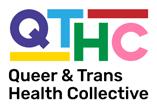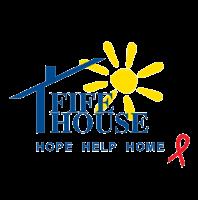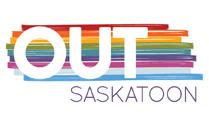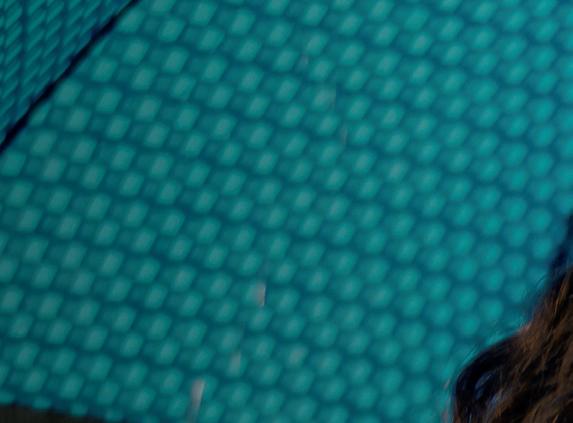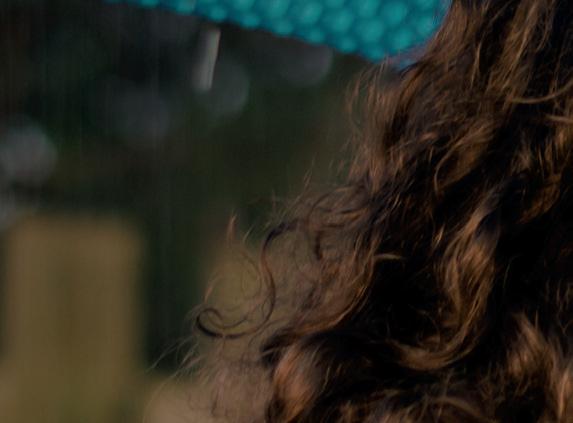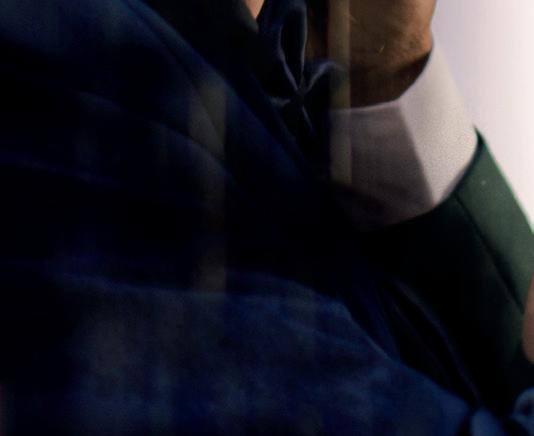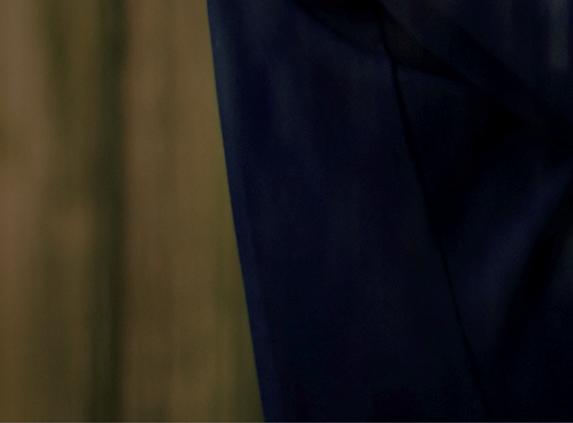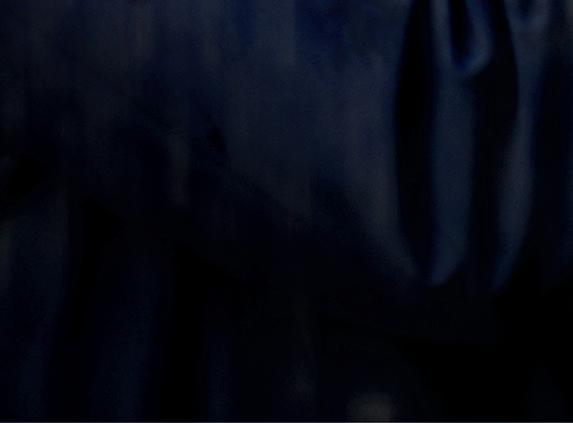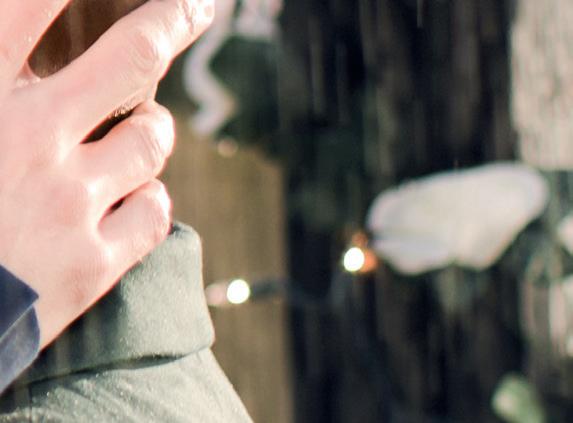
MUSIC LEGEND AND GAY ICON THELMA HOUSTON OPENS UP
CYNDI LAUPER’S ‘TRUE COLORS’ SHINE THROUGH SINGER-SONGWRITER SIMONE DENNY IS RECLAIMING HER TIME
10 YEARS LATER: THE CAST OF THE CRITICALLY ACCLAIMED SHOW LOOKING











CYNDI LAUPER’S ‘TRUE COLORS’ SHINE THROUGH SINGER-SONGWRITER SIMONE DENNY IS RECLAIMING HER TIME
10 YEARS LATER: THE CAST OF THE CRITICALLY ACCLAIMED SHOW LOOKING












PUBLISHER
Patricia Salib
EDITOR
Christopher Turner
ART DIRECTOR
Georges Sarkis
COPY EDITOR
Ruth Hanley
SENIOR COLUMNISTS
Paul Gallant, Doug Wallace
CONTRIBUTORS
Jesse Boland, Matthew Creith, Adriana Ermter, Bianca Guzzo, Elio Iannacci, Karen Kwan, Larry Olsen, Stephan Petar, Michele Yeo
VICE PRESIDENT OF DEVELOPMENT
Benjamin Chafe
DIRECTOR OF COMMUNICATIONS AND COMMUNITY ENGAGEMENT
Jumol Royes
COMMUNITY RESOURCE NAVIGATOR
Tyra Blizzard
ADVERTISING & OTHER INQUIRIES benjamin@elevatemediagroup.co
EDITORIAL INQUIRIES editor@inmagazine.ca
IN Magazine is published six times per year by Elevate Media Group (https://elevatemediagroup.co). All rights reserved. Visit www.inmagazine.ca daily for 2SLGBTQI+ content.
180 John St, Suite #509, Toronto, Ontario, M5T 1X5

ON THE COVER: Thelma Houston
PHOTOGRAPHER: Jones Crow
MAKEUP ARTIST: Jeff Jones

Issue 119
July / August 2024
INFRONT
06 | QUEER ACTIVIST’S ADVOCACY CONTINUES IN CANADA AFTER SURVIVING VIOLENCE IN UGANDA
Steven Kabuye is continuing his advocacy work from Canada and calling for global action after relocating with help from Rainbow Railroad
08 | BEAT THOSE SUMMERTIME BLUES
Seasonal affective disorder during the summer is a real thing. Here’s how to deal with it
11 | THE CHALLENGE OF HIV IN AN AGING POPULATION
Kate Murzin, director of National Programs at Realize, talks to IN about the organization’s commitment to supporting the aging HIV community in Canada
12 | FRIENDS OF RUBY: COMPREHENSIVE SUPPORT SERVICES FOR 2SLGBTQIA+ YOUTH
Empowering Canada’s vulnerable youth through mental health, housing and community support programs FEATURES
14 | NORTHERN LIGHT
Singer-songwriter Simone Denny opens up on revisiting her past, restoring her art and reclaiming her time
18 | WHY STRAIGHT MEN WANT TO BE THOTS
It is essential that men understand the fundamentals of feminism and queer liberation before they adopt trends created by the girls and the gays
20 | HO-MANTIC COMEDY
Jack Tracy stars in Danny Will Die Alone
22 | VITA KARI’S DIGITAL ART ATTACK
The Los Angeles-based artist talks to IN about TikTok virality, marrying themself, and what the craziest thing about being creative really is…
24 | LEGENDARY SOUL
Disco queen Thelma Houston opens up on serving, surviving and slaying five decades with the LGBTQ+ community
28 | CYNDI LAUPER’S TRUE COLORS SHINE THROUGH IN NEW DOCUMENTARY
Let The Canary Sing, a new documentary exploring the remarkable life and career of the ’80s pop superstar Cyndi Lauper, highlights her early activism for LGBTQ+ people
32 | 5 TIMES CYNDI LAUPER SHOWED HER OUTSPOKEN ALLYSHIP THROUGH HER MUSIC
The ’80s pop icon has proven herself to be a true ally of and advocate for the LGBTQ+ community over the years, as shown by her consistently outspoken political stance and her (meaningful) timeless songs
engaged atop
via Pink
a campaign
for the sake of 2SLGBTQI+ visibility.
34 | WHY ARE WE STILL ‘LOOKING’ 10 YEARS LATER? IT MIGHT BE THE CAST HBO’s critically acclaimed show about modern-day gay life in San Francisco ran from January 19, 2014, to July 23, 2016
40 | SHOWCASING THE RAINBOW YEAR ROUND
Pride Month may be over, but a London, Ont., brand is making sure you have access to Pride products 365 days a year
42 | COMMON BOND
The bevy of hairstyling products for the new DIY hair-bonding trend promise great-looking locks and a whole lot of chatter
44 | THE TRICKY THING ABOUT OPEN RELATIONSHIPS ISN’T REALLY THE SEX Here’s the thing about navigating an open relationship.… What works sexually may not work emotionally
46 | CANARY ISLAND CHARM
A yacht adventure through Spain’s celebrated archipelago brings natural diversions and cultural revelry
50 | FLASHBACK: JULY 6, 1999 IN 2SLGBTQI+ HISTORY
Soldier Barry Winchell dies after anti-gay hate crime

Steven Kabuye is continuing his advocacy work from Canadian soil and calling for global action after relocating with help from Rainbow Railroad
By Jumol Royes
Steven Kabuye refuses to let a near-death experience due to a homophobic hate crime derail him from fulfilling his destiny to advocate for 2SLGBTQI+ rights.
The 2SLGBTQI+ Ugandan activist was stabbed by unknown assailants on his way to work just outside Uganda’s capital city of Kampala in January of this year. The violent knife attack left him near death and in critical condition.
As the executive director of Coloured Voices Media Foundation –Truth To LGBTQ Uganda (a youth-led organization that advocates for and promotes the human rights, health and socio-economic well-being of 2SLGBTQI+ youth in Uganda and across the African continent), Kabuye has been an outspoken critic of Uganda’s Anti-Homosexuality Act (AHA23) that was signed into law in May 2023 by President Museveni.
AHA23 has been condemned by human rights activists globally and is widely considered to be one of the most extreme examples of anti-2SLGBTQI+ legislation in the world. Punishments include life imprisonment and the death penalty.
Kabuye made the difficult decision to flee Uganda this past March, relocating to Canada with the support of Rainbow Railroad – a global non-profit that helps at-risk 2SLGBTQI+ people worldwide get to safety.
Rainbow Railroad has seen a 49 per cent increase in requests for assistance from Ugandans in the first two months of 2024 compared to the same period last year. Uganda remains one of the top countries from which the non-profit receives requests for help.
IN connected with Kabuye to find out how he’s adjusting to his new life in Canada and what his organization is doing to continue to advocate for the rights of 2SLGBTQI+ Ugandans, and to hear his message for Canadians who want to be a part of the solution.
You survived a very harrowing experience earlier this year. How are you coping?
That incident scared me but proved that I was destined to make a difference in the lives of others, especially individuals whose rights are used as a bargaining chip to get or retain power in a country like Uganda. Thanks to Rainbow Railroad and other entities that helped me get to Canada, I’m alive, feel safe, and continue to advocate for change and the betterment of 2SLGBTQI+ communities.
Can you share what life was like for 2SLGBTQI+ individuals in Uganda before the AHA23 was signed, and what it looks like today? Life was hard, but it became more dangerous and deadlier with the state-sponsored homophobia that came along with AHA23. Many Ugandans feel like they were given a mandate to kill and torture 2SLGBTQI+ people under the law.
Uganda’s Constitutional Court recently rejected a request to nullify AHA23. What does this mean for 2SLGBTQI+ Ugandans? What, if any, recourse do they have?
The Constitutional Court edited AHA23, removed the articles that were objected to by the World Bank and the US President’s
Emergency Plan for AIDS Relief (PEPFAR) and slapped it back to 2SLGBTQI+ Ugandans. Until today, the price of freedom to an ordinary 2SLGBTQI+ Ugandan is death. We are going to see a rise in violence towards 2SLGBTQI+ Ugandans. Let’s hope the Supreme Court repeals it soon.
As the founder and executive director of the Coloured Voices Media Foundation – Truth To LGBTQ Uganda, can you talk about some of the programs and initiatives your organization is currently undertaking to help advance the rights and freedoms of 2SLGBTQI+ youth in Uganda?
We have been sacrificed so the politicians and the corrupt can thrive. Our freedom is being held ransom for the 2026 vote. And just like that, we are human beings with no human rights in our own country. We must resort to sustainable and tactful approaches to rise above it all, including empowering ourselves in all ways possible. This way, we can get a seat at the table and stop being part of the menu.
At Coloured Voices Media Foundation, we have decided to take the direction of skilling the most grassroots 2SLGBTQI+ youth who have a passion for improving their livelihood while expressing themselves through fashion. Hence the Tailoring Our Way To Freedom project. We look forward to skilling 1,000 2SLGBTQI+ youth by the end of 2025.
Our freedom and our rights cannot wait. We want them realized and fulfilled like yesterday. The anti-gay campaign has capitalized on using media, so we have decided to give them a taste of their own medicine by using media to undo the smear campaign and refute the lies about being homosexual. Through this campaign, we’re rallying a strong digital army of passionate 2SLGBTQI+ allies and activists to counter the anti-gay propaganda. We refuse to be silenced. We are standing our ground and demanding our human rights, just like any other Ugandan.
How has Rainbow Railroad supported you on your journey?
Rainbow Railroad helped me relocate to Canada, provided financial support and connected me to other organizations to assist with permanent settlement here in Canada.
So, what’s next for you?
I’m settling in nice and good in Canada. I’m going to continue my advocacy work to make sure every 2SLGBTQI+ Ugandan tastes freedom and equality. If the opportunity arises, I also plan to continue my education as I settle into my new home.
What’s one thing you would encourage Canadians to do or one action you would encourage them to take to help protect and support 2SLGBTQI+ people in Uganda?
Stop funding human rights abusers. Canadians can open their welcoming arms to the most at-risk 2SLGBTQI+ youths in Uganda by instituting a special committee specifically for Uganda to vet and quicken the process for those in need of immediate relocation support due to safety concerns. Canadians can also partner with grassroots 2SLGBTQI+ youth organizations that are change- and impact-driven to improve the standard of living for 2SLGBTQI+ youths who have no connections and are marginalized by other 2SLGBTQI+ community members and stakeholders.
JUMOL ROYES is a senior communications strategist and writer and an Ottawa-based poet, storyteller and glass-half-full kinda guy. He writes about themes that address compassion, community, identity and belonging, with a special focus on centring the lived experiences of Black and 2SLGBTQI+
Seasonal affective disorder during the summer is a real thing. Here’s how to deal with it
By Karen Kwan
We’ve all heard about (or experienced) the winter blues – or the more serious condition, seasonal affective disorder (SAD), with its symptoms including low mood and changes to your sleep and appetite, triggered by the cold, dark days of the winter season keeping us inside (not to mention getting less natural light and our bodies producing less vitamin D). But summer is all about fun in the glorious sunshine and those long, bright days, right? For many people, it is – but for some, summer blues do, in fact, exist.
If you’ve inexplicably found yourself often feeling glum and just not yourself while almost everyone seems to be thrilled about the few months of sunny weather, you may be experiencing the summer blues. Other symptoms include feelings of hopelessness, changes in your weight, being less interested in activities you usually enjoy, and disrupted sleep.
What’s making you feel this way about the season when summertime usually signifies joy? For one, our routines are often disrupted during the summer season, leading to feelings of stress. If you have kids, they’re out of school and so you’re now juggling their summer activities instead of the usual Monday-to-Friday school routine. Also, perhaps you’re seeing many people enjoying fabulous summer vacations abroad or regular getaways to their cottages, and you don’t have the financial means to enjoy time off in the same way. Being unable to take part in summer activities due to physical limitations can also contribute to feeling lonely and depressed, or perhaps you avoid joining friends at the beach because you feel insecure about your physical appearance.
The good news is that there are ways you can work on managing your summer blues. To start, work on establishing – and maintaining – a summer routine. This includes sticking to your sleep schedule and eating a healthy balanced diet so that you can maintain your mood and energy levels. Here are some other useful tips that may help bring the joy back into your life.

Plan ahead, and budget so you can enjoy time off You can’t afford a posh cottage rental? So what! Search out cheaper alternatives as ways to enjoy the summer weather locally, such as camping or even just a couple of day trips to a beach or provincial park.
Keep up with your social life
Even when you’re feeling low, resist the urge to isolate yourself –make plans with friends. And those plans don’t all have to involve big barbecues or a pool party if you’re feeling self-conscious – you could get together for some ice cream after dinner in the neighbourhood, or a drink on a patio. Enjoy some of the fireworks shows, or hang out at one of the city’s street festivals.
Stay active though the warm months
Working out can help minimize feelings of depression. You can simply stick to your usual exercise program, but there are also lots of activities you can more easily try out in the summertime compared to the winter. Consider trying something different – it may spark a new passion. Check out pickleball at the new court in your neighbourhood, or drop into the local run crew’s group run, for example. Public pools offer another great way to get your heart rate up – swimming laps, that is – while also keeping cool in the summer heat.
Think about what has helped you in the past
Take some time to consider how you’ve felt over past summer seasons and what contributed to your feeling blue, and what helped to alleviate those feelings of sadness. Was it people’s social media posts showing them enjoying the best summer ever? Then maybe this is a sign to take a break from Instagram. Finally, consider seeking out professional help – if you’ve been struggling with SAD or the summer blues, a psychotherapist or your general practitioner could not only help you get back on track, they would also have insight as to whether your feelings are a symptom of another condition.

Each year, Fife House provides critical supportive housing and wrap-around services for hundreds of vulnerable community members and families living with HIV/AIDS.
Join us in providing hope, help and home to those who need it most. Together, we can build an inclusive and equitable society, free from stigma, for everyone.
Donate, Volunteer or Partner with us!




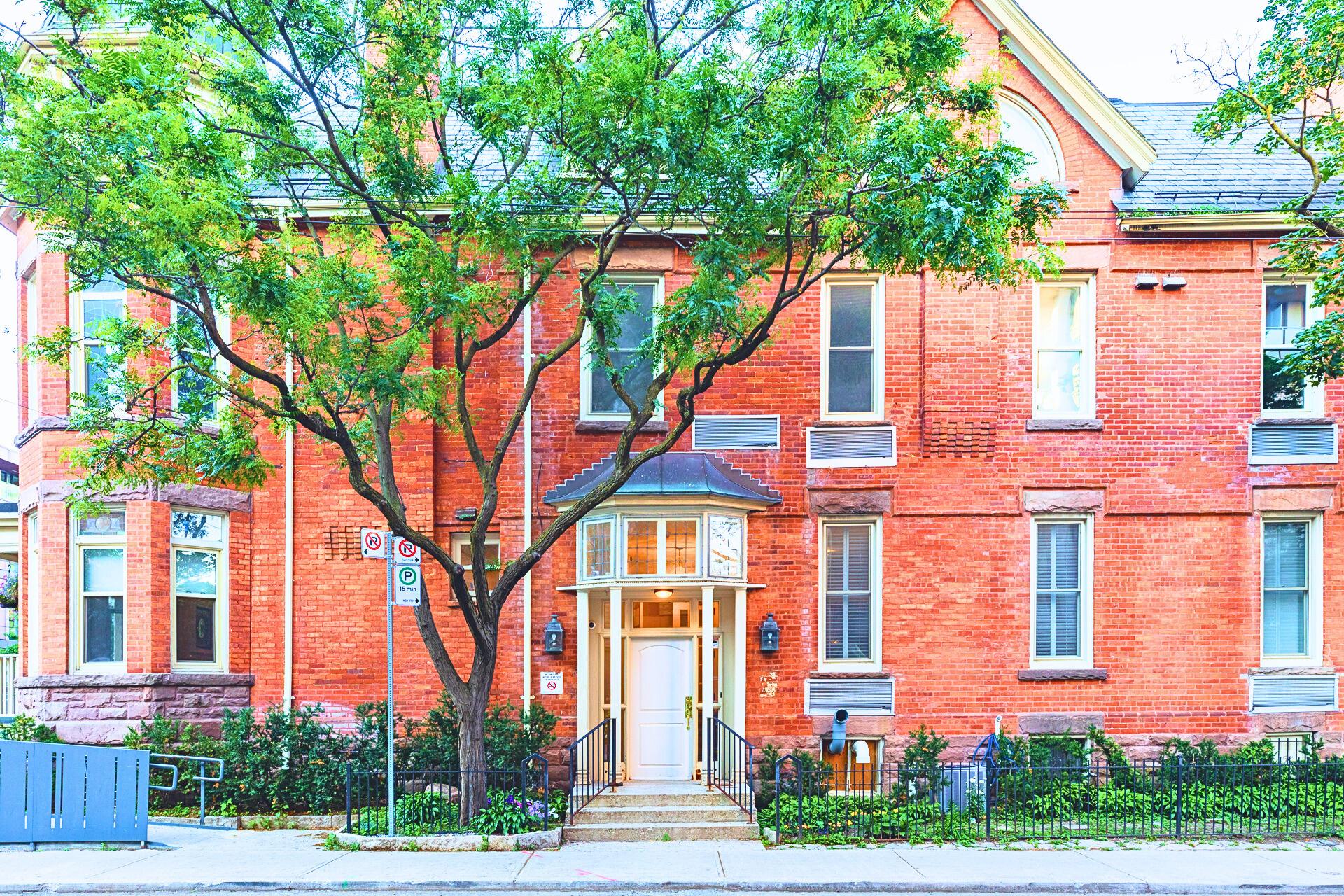



Fife House thanks all of our invaluable supporters, partners and friends for making our A Taste For Life 2024 fundraising event such a huge success! Together, we were able to raise much-needed funds to support vulnerable community members and families living with HIV/AIDS. Please join us again next year!
For more information about A Taste For Life, visit atasteforlife org









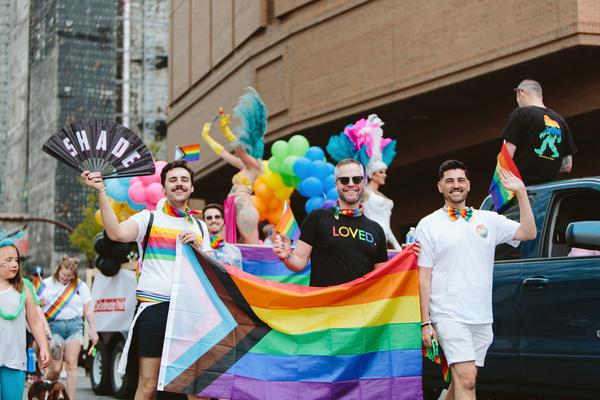
A U G . 3 1 S T & S E P T . 1 S T




Kate Murzin, Director, National Programs at Realize, talks to IN about the organization’s commitment to supporting the aging HIV community in Canada, by promoting the integration of rehabilitation into their care, treatment and support
HIV treatment has come a long way since the early days of the HIV/AIDS epidemic. With the proper medication, people living with HIV can keep the virus under control and live long and healthy lives. However, with a longer life often comes other health issues and a resultant increase in the complexity of treatment. Moreover, the needs, wishes and experiences of older adults living with or vulnerable to HIV are often not discussed. That’s where Realize comes in. Formed in 1998, Realize (formerly the Canadian Working Group on HIV and Rehabilitation) has a core focus of promoting innovation and excellence in rehabilitation in the context of HIV and other chronic and potentially episodic conditions. They also work to bridge the traditionally separate worlds of HIV, disability and rehabilitation through research, education and crosssector partnerships.
Kate Murzin has been working in the HIV community since 2007 and has been working with Realize since 2013, when she joined the Canadian Working Group on HIV and Rehabilitation (now Realize) as a Master of Public Health practicum student and subsequently took over and grew the organization’s HIV and aging portfolio. Today, as the Director, National Programs, Murzin continues to focus on the health and well-being of aging and older people living with or vulnerable to HIV and coordinates the work of the Program Team.
We sat down with her to find out more about the unique challenges of people aging with HIV in Canada, and the supports available through organizations like Realize
What services does Realize offer?
We provide a variety of educational tools and resources, as well as opportunities to get involved in advocacy, research and knowledge sharing. We convene the National Coordinating Committee on HIV and Aging (NCC), and offer blended learning courses for health and social care providers focused on how to best support people aging with HIV. We are a founding member of the International Coalition of Older People with HIV, and are working on a variety of research projects including a global project (funded by ViiV Healthcare) to develop tools and resources on sexuality and sexual health for older people and those who provide services to this demographic.
Why is it important to focus on people living with HIV who are 50 years old and older?
People with HIV are living longer because of good treatment options, and one quarter of new HIV diagnoses occur in those age 50 or older. People living with HIV may be more likely to develop other chronic illnesses and live with more illness/
disability at younger ages due to chronic inflammation; also, the same determinants of health that increase a person’s risk of HIV exposure also mean people who are living and aging with HIV are more vulnerable to a poor quality of life.
What are some of the barriers to care for people aging with HIV?
Service providers in the aging sector may not be familiar with the unique life course experiences of people living longterm with HIV, as they have not worked with this population before. And these service providers often have not received any training to address the stigma that still persists about HIV transmission. Both of these realities can lead to poor aging care experiences. Ageism, ableism and HIV stigma, whether enacted or internalized, can intersect to form a significant barrier to accessing care/support, both in the HIV sector and in mainstream health and aging services. Our healthcare system does not cover services that are crucial to quality of life for people aging with HIV, including rehabilitation, dental care and dentures, sensory aids, over-the-counter medication and some screening tests.
Can you tell us more about the study that is currently underway on Financial Empowerment for Healthy Aging with HIV?
One of the things we have learned through our recent HIV and aging research is that many older people with HIV are living in precarity – they experience food and housing insecurity, and worry that, as costs of living increase, the gap between their resource needs and their assets will continue to widen. This study (which is Ontario-focused, in English and French; it is funded by the Ontario HIV Treatment Network) aims to find out what their financial empowerment needs are. This includes their financial literacy, their knowledge of income supports and benefits programs, their access to low- or no-cost financial counselling, and their ability to borrow money without being charged excessive interest. We are also conducting focus groups with service providers from community-based HIV organizations and clinics to find out more about their capacity to support people aging with HIV. By March 2025, we will have summarized the findings and be able to make recommendations for policy and practice change to enhance access to financial services and supports for people aging with HIV.
To learn more about Realize and resources available to support PLHIV, visit www.realizecanada.org/.
To learn more about ViiV Healthcare Canada, visit www.viivhealthcare.ca.
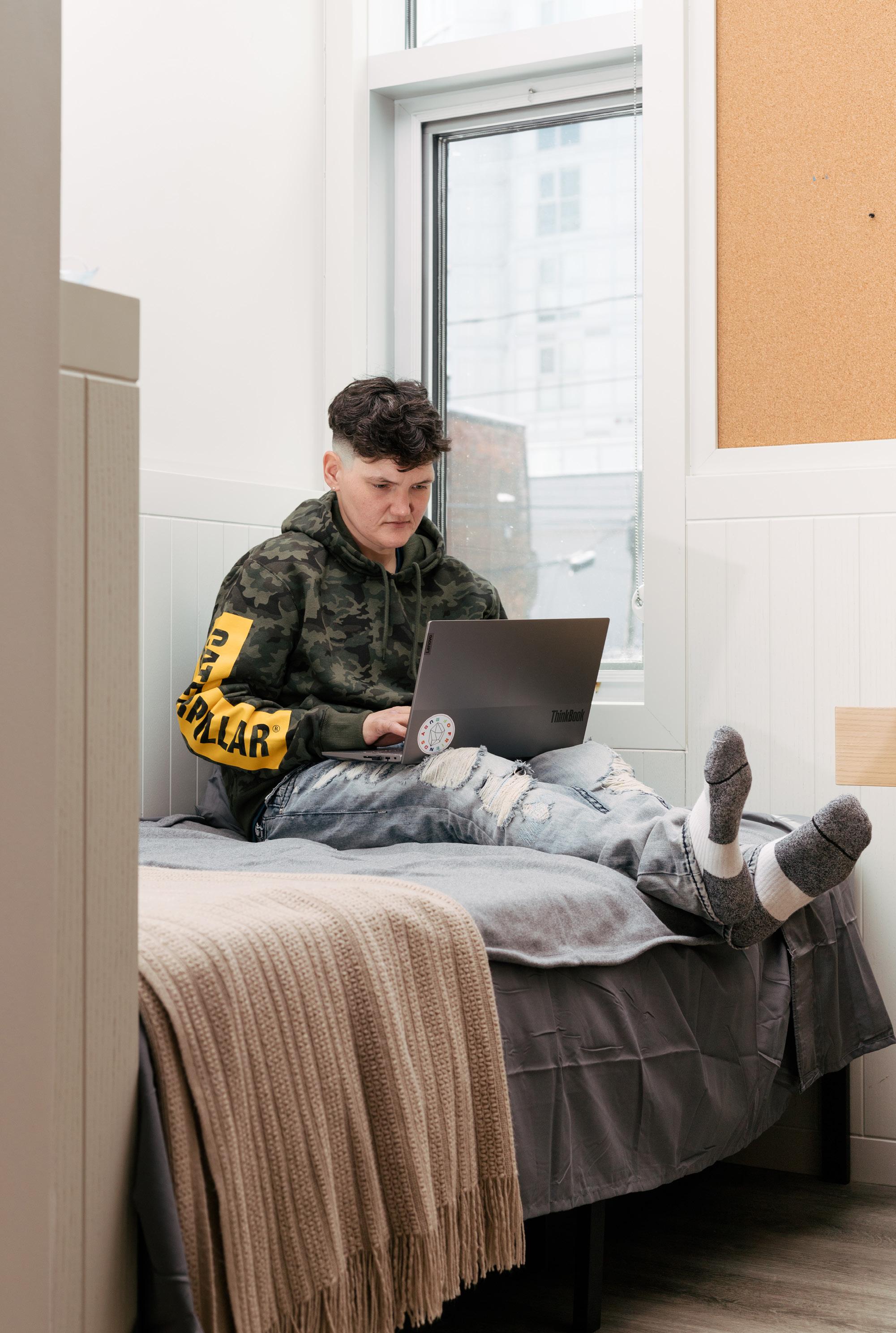
Empowering Canada’s vulnerable youth through mental health, housing and community support programs

Youth in Canada are currently grappling with an escalating mental health crisis, and 2SLGBTQIA+ youth are at even greater risk. The fear, isolation and anxiety brought on by the COVID-19 pandemic have exacerbated the mental health challenges faced by these youths, further highlighting the urgent need for dedicated support systems. Friends of Ruby is at the forefront of this effort, offering a unique and comprehensive approach to the progressive well-being of 2SLGBTQIA+ youth aged 16-29 through integrated mental health services, system navigation, housing and wraparound supports at no cost.
Friends of Ruby stands out as a beacon of hope and support for 2SLGBTQIA+ youth, primarily because its services are provided by frontline staff who themselves identify as members of the 2SLGBTQIA+ community. This peer-based model not only ensures that the services are culturally sensitive and relevant but also fosters a sense of understanding, trust and relatability between the staff and the youth they serve. This approach is crucial in creating safer spaces where young people feel validated, involved and empowered to lead healthier lives.
Friends of Ruby’s vision is clear: a world where all 2SLGBTQIA+ young people feel validated, involved and empowered. To realize this vision, Friends of Ruby offers a suite of services that address the multifaceted needs of 2SLGBTQIA+ youth. The integrated mental health services include individual counselling, group therapy and crisis intervention, all designed to provide both immediate and long-term support. The system navigation services help youth access essential resources, such as health care, education and employment opportunities, while the housing program offers stable and safe living conditions that are crucial for their well-being.
On average, 82 new youth are placed on the counselling waitlist each month, with a median wait time of 4.9 months for counselling services. This statistic underscores the urgent demand for mental
health support among 2SLGBTQIA+ youth, and the critical role Friends of Ruby plays in meeting these needs.
The importance of such comprehensive support systems cannot be overstated. According to various studies, youth who have access to supportive environments and mental health services are more likely to experience positive outcomes, including improved mental health, higher self-esteem and a greater sense of belonging. Friends of Ruby’s holistic approach addresses the diverse needs of 2SLGBTQIA+ youth, helping them navigate the complexities of their identities and experiences in a society that often marginalizes them.
Friends of Ruby is more than just a service provider; it is a lifeline for many 2SLGBTQIA+ youth in Canada. By offering integrated mental health services, system navigation, housing and wraparound supports, the organization empowers young people to lead healthier, more fulfilling lives. In a world where the mental health crisis among youth is deepening, Friends of Ruby’s dedicated and community-driven approach provides a model for how to support and uplift the most vulnerable among us.
As the world continues to navigate the challenges brought on by the pandemic, the work of organizations like Friends of Ruby is more critical than ever. Their commitment to the well-being of 2SLGBTQIA+ youth not only addresses immediate needs but also paves the way for a more inclusive and supportive future.
To learn more about Friends of Ruby and how you can support their mission, visit their website at www.friendsofruby.ca.
Singer-songwriter Simone Denny opens up on revisiting her past, restoring her art and reclaiming her time
By Elio Iannacci
Singer-songwriter Simone Denny is one of dance music’s most proficient shape-shifters. In a matter of seconds, her vocals can veer effortlessly from sultry to ferocious and passionate to pained. On stage and in studio, she exudes a queen-like presence and gives choruses such aural complexity, weaving a sonic texture into them that is either enraged, radiant, rapturous or restrained. The Torontoborn singer’s diverse skillset – which can be heard on hits such as “Dreamcatcher” (with BKS), “You’re A Superstar” (with Love Inc.), “All Things Just Keep Getting Better” (with Widelife) and “Drama Queen” (with Barry Harris) – has been part of the soundtrack of queer clubs for nearly four decades. Weeks before preparing to stun crowds at Toronto Pride, Denny spoke to IN about the lessons she’s learned, the hard-won victories she’s won, and the deeply cherished connection she has with the 2SLGBTQI+ community.
Those who know your work understand that you are a true groundbreaker in the field of Canadian dance music. Do you see yourself as someone who has changed history in Canada? I didn’t recognize it until I took a pause during COVID and people would tell me that at one point in the ’90s and 2000s, I was the only person of colour representing the Black community on Canadian radio. I guess I’m starting to change history.
Songs you’ve done with BKS, Love Inc. and Widelife had massive crossover to the US and Europe. Was there a moment where you were overwhelmed by how much you were being played? Yes. I was walking down the streets in New York and I could hear the song [BKS “Dreamcatcher” (feat. Simone Denny), Love Inc. “You’re a Superstar” (feat. Simone Denny), and Widelife “All Things (Just Keep Getting Better)” (feat. Simone Denny)] playing in almost five different stores. Then I heard it on KTU [a radio station which reaches nearly five million listeners] – so that was huge. When I started to do shows at that time, I’d be on the bill with people like Cyndi Lauper, Ultra Nate and Inaya Day.
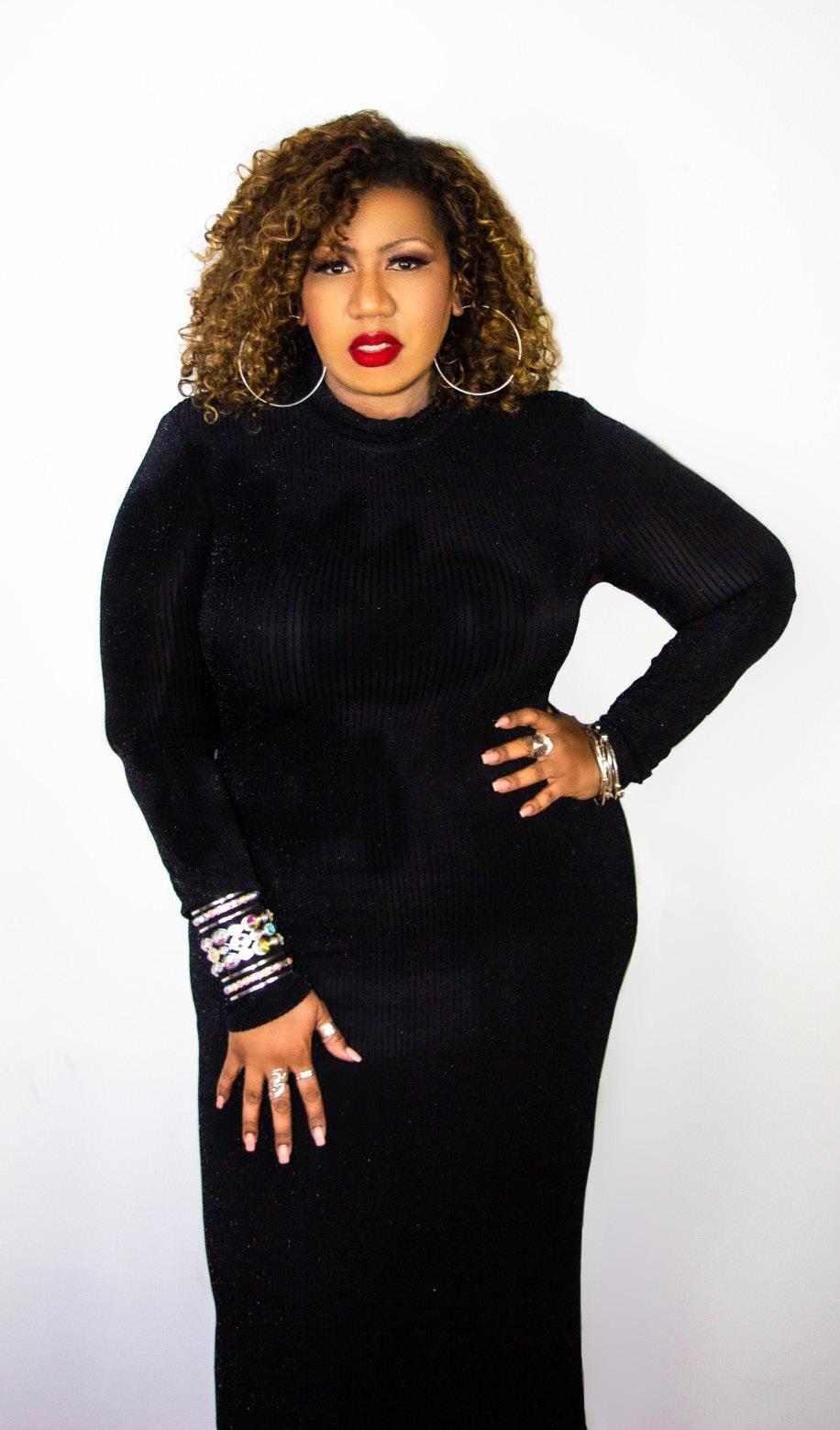
Lyrics on your track ‘Cliché’ such as ‘Don’t bring a knife to a gun fight / don’t bring sand to the beach / don’t judge a book by its cover / Practise what you preach’ sound like rules to live by. Do you live by them?
I do. I do practise what I preach. I try to stay true to who I am. When I’m doing any song, it has to be something that moves me. It does not matter what the music genre is, I have to feel it.
How did you navigate not being a cliché period in an industry that encourages boxing people up as products or easy-tounderstand concepts?
One particular producer that’s from Canada who had a studio then said I ‘didn’t have the look’ of a star because I was a curvier girl. As soon as all the tracks I did with BKS – songs like ‘Dreamcatcher’ and ‘I’m in Love With You’ – were doing well, he called. I tell many artists, you have to know who you are, what you want, and that your talent is valid. You get a lot of recommendations from failed musicians and everyone thinks they are an expert. Had I listened to that producer, I would not have achieved any of the things I did.
Fast-forward to ‘All Things (Keep Getting Better)’ – the song preaches about a certain Utopia that isn’t always a reality. Is singing about equality a way to manifest it?
Oh yes. That’s how I approach the music industry. I don’t care what colour you are, what your religious background or sexual orientation is, once you like the music, come and party with me. If your hands aren’t in the air by the time I’m finished singing, I’m not doing my job. I’m here to make a space for everyone.
Like Taylor Swift, you rerecorded your huge hit with Love Inc. – the anthem ‘Superstar’ – with Belters and Micky Modelle to take back what was yours. Was the rerecording process a reclamation?
Absolutely. I left Love Inc. at a point where I realized money wasn’t right. Treatment wasn’t right. I wasn’t being looked out for and wasn’t given fair opportunities. I should have been credited for writing on those big songs because I put in the work. I love my audience and that energy exchange we had, but back behind the scenes with Love Inc., there was so much turmoil and negativity.
The kind of bitterness that comes from such a bad work experience can kill a career. Did you feel you prevailed? Well, I let go of the sourness a long time ago. It took me about a year because I was really hurt. I had worked really hard to get to that point in music and it was just very painful to have had to walk away from the group at that time. Rerecording ‘Superstar’ fell into my lap. I always check my Instagram and I got tagged by the Belters in a version that they had created. I was 10 seconds into it and I called my manager so I could work with them. I loved it and I felt it was time. I also did a new version of ‘Broken Bones,’ which just came out. It’s with the Sunset Brothers and Micky Modelle. Remaking it also felt so empowering and right on time.
You have been quoted as saying, ‘The contract with Love Inc. was like being in a type of enslavement.’ What did it stipulate? It would have been an enslavement because the contract amendment that was sent to me stipulated I would not have been ever able to
do anything else – sing, write or perform – outside of Love Inc. without permission. That solidified me leaving the group. As soon as I refused, rumours started flying and they tried to paint me as a diva. Anybody that knows me knows that I’m not, I’m so low-key.
Between dance music, you also recorded an R&B-fusion album called Stereo Dynamite Sessions . A track that sticks out is actually called ‘This Ain’t Our Time.’ There’s an analogy for artistic journeys in one of the song’s lyrics: ‘Darling, give it time, let them change their mind.’ Tell me about the pressures of waiting for an industry to accept you.
There’s a lot of waiting for the audience to catch up or for me to catch up with them. I know I can confuse or blow people away when I do other genres of music – like I did a country-rock song with Graham Trude two years before country became a big part of the pop conversation. The song is called ‘Home Crowd’ and industry people were like, ‘I don’t know what to do with this.’
Then Beyoncé releases Cowboy Carter . Do you think that project forced mainly white country music programmers to rethink their stances?
They had no choice. When I recorded TK, a lot of people were like, ‘That’s country – it’s more white people music.’ I know the history of country music and rock, so those comments never fazed me. We, as people of colour, should be doing all different genres and shouldn’t just be locked into hip-hop or R&B. Beyoncé has blasted the doors open because there have always been Black country artists, always, but they’ve been shut out.

You never left dance music and even tributed it by recording a tribute to legendary house music with ‘Sensation’ and ‘Twilight.’ Is it important to you to recognize house as part of our cultural fabric?
Yes. So much of dance music unfolded in house in this country, so it should be thought of as an important part of Canadian music. The Canadian industry doesn’t quite understand the depths of this music, thinking, ‘It’s just for a niche audience.’ But it is mainstream all over Europe, the Middle East and South America. There are no hang-ups there.
Lady Miss Kier once told me there was such a resistance to house music by her label, even though it was on the charts. She said Deee-lite was often called ‘too Black and too gay.’ Was that something that you ever faced?
I got the opposite, actually. I was usually told by Canadians who don’t understand the genre of music that I was singing ‘that white girl stuff.’ I know that house comes from Detroit, Chicago and New York – out of the Black American experience – but when I started, many didn’t [realize that].
Do you see yourself on stage as an actor playing a character or as a painter, using your voice as a palette when performing? A painter and a vessel. It is truly an honour to look into the audience
“We, as people of colour, should be doing all different genres and shouldn’t just be locked into hip-hop or R&B.”
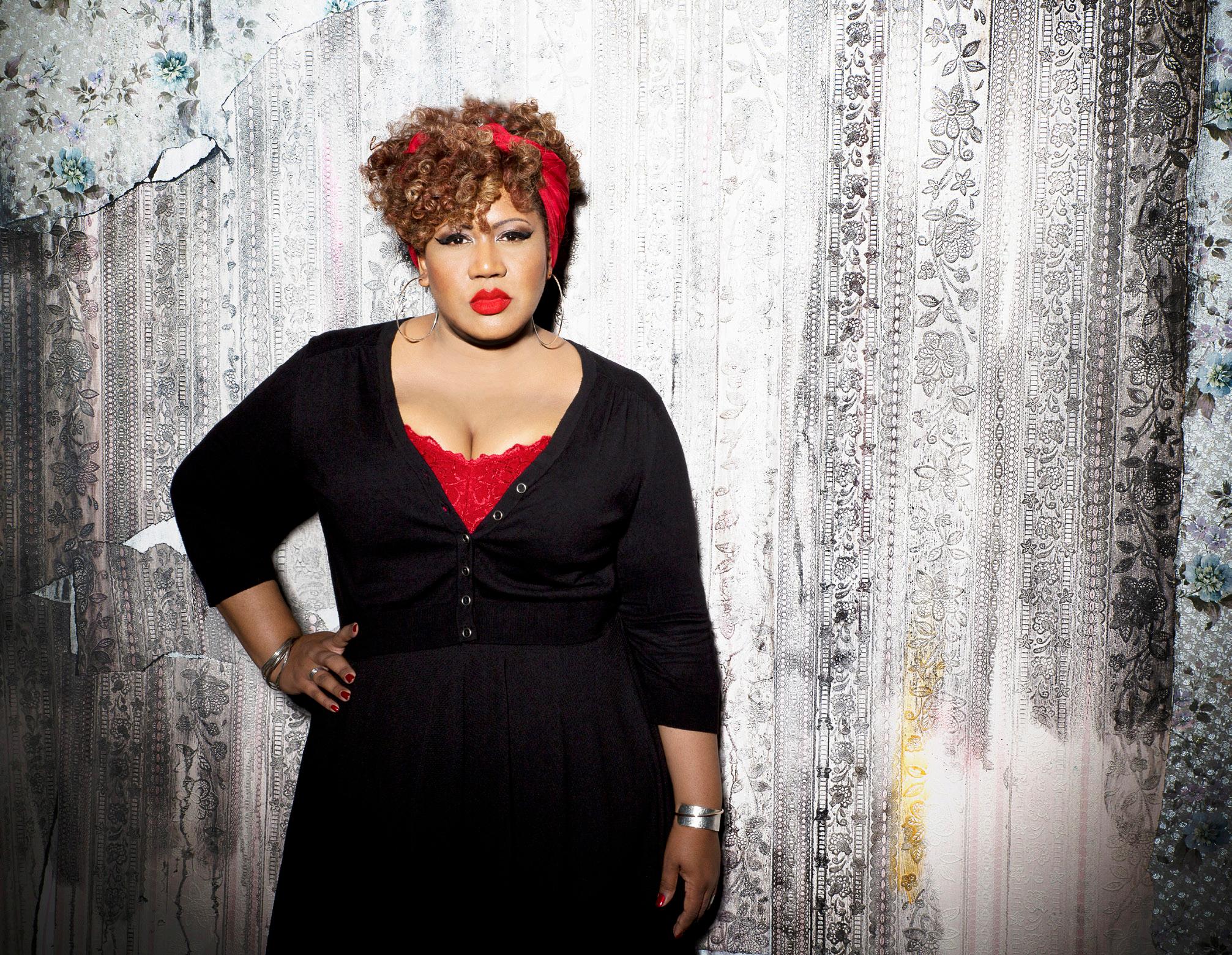
and see joy manifesting as you sing – and painting those vibrant colours through notes.
How do you feel this country should show its support to dance music?
By acknowledging it. I’ve been petitioning for Love Inc. to be inducted on Canada’s Walk of Fame. I get the feeling that they don’t feel Love Inc. was important enough in music history. People email me on Instagram and Facebook and they keep asking why we haven’t been asked. Maybe they don’t understand what Love Inc. brought to the table? It was the first dance music group to go platinum in Canadian history, period. The Canadian mainstream still doesn’t understand how much work and touring I’ve done and how much touring around the world.
As well as being part of the main voice on soundtracks to TV series that have changed television… Queer as Folk, Queer Eye for the Straight Guy and The L Word I’ve been supporting the gay and LGBTQ+ community forever… before it was seen as cool to do so.
Have you learned anything from being so connected to the 2SLGBTQI+ audience? Do you think they’ve learned anything from you?
To not look at society as a whole for the love you need. They taught me to find my people. Every time dance and house music divas get up on stage, we’re willing to go against society because we see an audience that does the same. We see a beautiful group of people who have loved and supported us, and we want to give that love right back.
Throughout pop music and rock and dance music, there have been collaborations like Grace Jones and Keith Haring, Madonna and the House of Xtravaganza, and you and Barry Harris with your song, ‘Drama Queen.’ Why do you think this union of queer artists and female pop artists has had such an impact?
Do you know why? Simply because mutual respect and understanding fuels the collaboration. Barry Harris, to me, is one of Canada’s greatest treasures. He had the biggest remix with Whitney Houston’s ‘It’s Not Right (But It’s Ok)’ in Thunderpuss (music producers Barry Harris and Chris Cox). When we got together and just did ‘Drama Queen,’ we were creating a world that that puts a priority on equality…because that’s our reality.
Let’s talk about your new music. What are you most excited about that you’re working on that you can talk about?
I’m working with a couple of producers and starting to produce myself. I’m stretching myself creatively in ways that I never did before. Tapping into DJing. I think that can only help me with my writing and my creativity.
So I’m wondering, do you find that Pride is like an incubator or that allows many legendary singers such as yourself, and Thelma Houston, CeCe Peniston, to not only keep up your artistry, but experiment?
It can be. You can experiment and try new things and see what works – but most of all, I see it as a place for all of us to co-exist and celebrate each other. It gives me a chance to connect with my audience in my city.

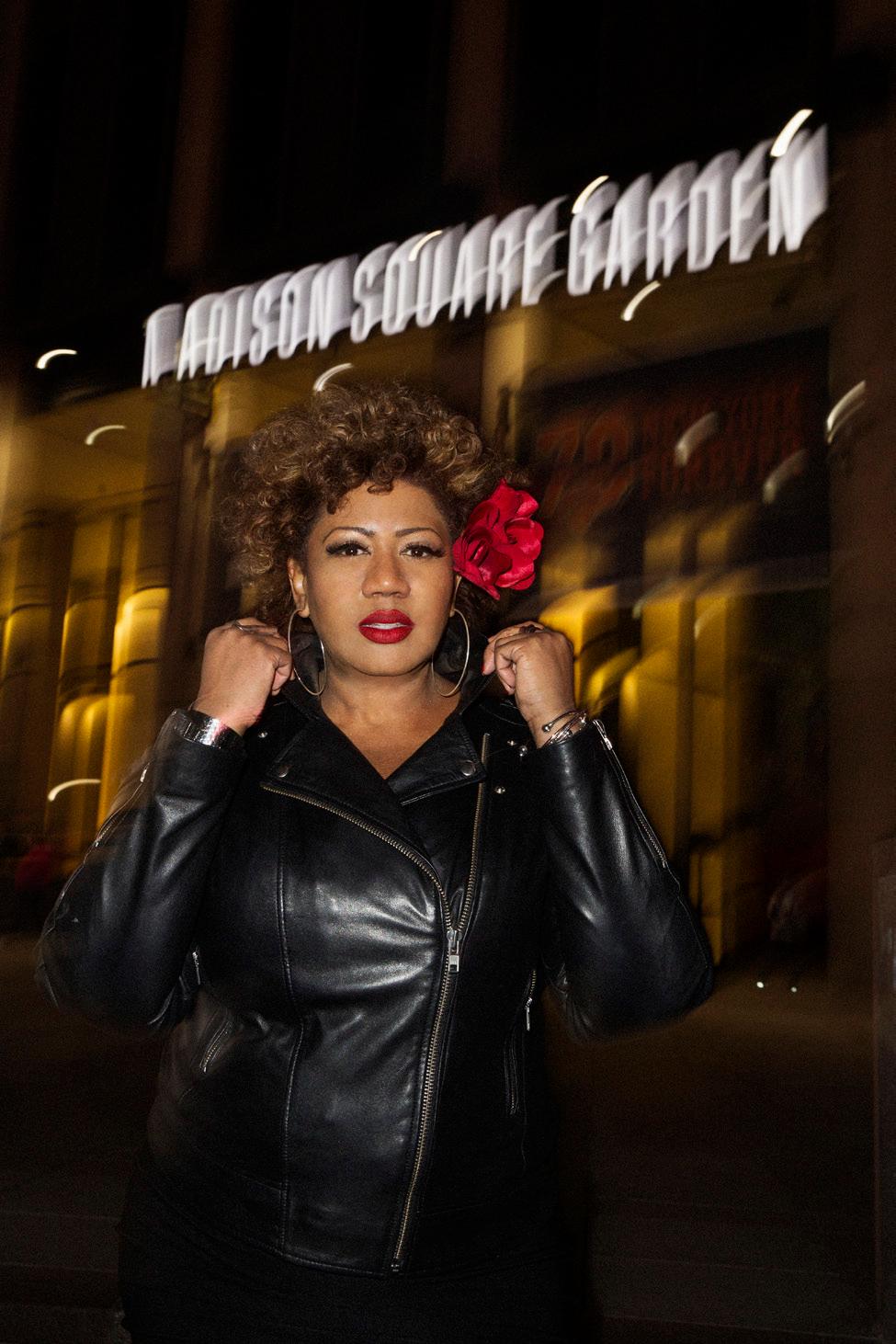

It is essential that men understand the fundamentals of feminism and queer liberation before they adopt trends created by the girls and the gays
By Jesse Boland
Take a moment and ask yourself, what is straight culture really? Well, besides not getting tested for STIs, there really is no such thing as straight culture. Heteronormativity is but the bland, sprinkle-less scoop of plain vanilla ice cream that serves as the template for human sexuality and relationships. It is only through queerness that curiosity and excitement can truly zest up the navigations of our own culture of sexuality. The gays and theys have historically been the true arbiters for cultural development, with the straights trying their best to keep up with us. Straight men in particular find themselves chronically late to the discovery of human joy that the girls and gays have been acutely aware of for generations. Their most recent discovery of genuine pleasure: lookin’ like a bitch and actin’ like a slut.
Before I lose you, we all know that cishet men are the original whores, who have allowed their loins to shape the very fabric of history through wars and crusades because they couldn’t just jerk off and call it a day. But promiscuity and hyper-libidinousness are just a small part of being a slut, with many who are branded the term often being victims of imagined projection from their name caller. Rather, being a “slut” or a “hoe” comes from a place of voyeurism wherein the slut in question serves as a symbol of sexual objectification for their onlookers.
While traditionally seen as a method of demeaning the subject, who becomes but a mere piece of meat whose sole purpose is to be ogled at and used for debaucherous enjoyment, as it turns out this can actually sometimes be kinda fun! It should be known by now that the majority of times when women dress up they are seldom doing it for the attention of men but rather for their own personal pleasure, or even for the camaraderie of fellow women who find joy in celebrating their own bodies in an unapologetic fashion. While gay men were quick to follow suit and equally partake in flaunting our bodies in scantily clad outfits and gyrating our hips in suggestive fashions to pulsating music, if one were to open TikTok these days it would seem our cishet male guests have also decided to drop in to the party.
Straight men suggestively flaunting their sexualities is nothing new: one can go all the way back to a young trollop named Elvis Presley spelling “COCONUT” with his hips on The Ed Sullivan Show, or Bruce Springsteen bussin’ his monkey wide open on his cover for Born in the USA; and God help us when Gen Z discovers how The Red Hot Chili Peppers used to wear their socks on stage. These depictions of male sexuality are fascinating. There’s not a woman’s body in sight: the idea is not to state men’s power over women, but rather for the female to gaze on them, to hegemonically allow themselves to be objectified by women. Similar to Springsteen’s album cover, the single cover for Maluma’s 2023 single “Coco Loco” sees his headless, naked torso holding a coconut over his crotch, stripping him of his personhood and reducing him to an ornamental piece of man-meat to be gawked at by male-attracted onlookers; much to his slutty delight.
The term metrosexual has swiftly evolved from a blasé term of the early 2000s that describes men who properly wash their asses into a Tumblr-amplified branch of neo-gender studies observing how straight men use queerness and feminism to their own benefit without giving back to either movement. While analyses
of Harry Styles-esque commodification of feminine aesthetics for galvanizing queerbaiting have been done to death and the world has slowly picked up on the trend of straight men hiding behind queerness and androgyny to hide their abusive actions, we have only recently begun to see the trend of men acting like bad bitches, and what ramifications it may have on women and queer men are still left uncertain.
“Heteronormativity is but the bland, sprinkle-less scoop of plain vanilla ice cream that serves as the template for human sexuality and relationships.”
While a public figure like Bad Bunny genuinely seems like he has the purest of intentions by posting naked selfies and throwing his ass in an octagon in the club as he has frequently advocated for the rights and protection of queer people – the ones who made it okay for him to live in his thotness – there are sure to be men who walk down the street wearing five-inch seam shorts with crop tops but still resort to violent straight panic upon becoming the subject of attention from gay onlookers. For while straight men have the privileged luxury of being able to dabble in slut culture by wearing revealing outfits and dancing suggestively, they are still mostly immune to the dangers of a rape culture that targets women and queer people. So while we may venerate the optics of men embracing their inner bad bitches, it is important that we not pretend that this is some great advancement of feminist gender politics or queer 2SLGBTQI+ acceptance but just straight guys getting yet another step up the ladder. After all, do you really think straight men embracing getting their asses eaten by their female partners was at the top of Judith Butler’s mission statement?
Still, you can’t exactly be mad at these men for making the most of their privilege. And while we may have made the case that some straight men are gradually learning to embrace acting like a thot, they are still only a small percentage of the population who are taking baby steps outside of their repressed cages of sexual frustration known as masculinity. It is essential that men understand the fundamentals of feminism and queer liberation before they can be trusted to roam free in their short shorts, taking thirst traps in the gym on butt day for their followers to yearn over. Men have historically allowed their penises to lead them into wars, and it is not impossible that they could very well let their bubble butts back them up into wats too if left unchecked.
Only time will tell if this celebration of straight bros acting like sluts will be a step forward for gendered equality, or yet another step back for double-standard misogyny/homophobia. All I know for now is that NLE Choppa went crazy on “Slut Me Out” and I am hyped to see some hockey butts making it clap to it this summer.

Danny Will Die Alone dives deep into the hellscape of being a single gay man today trying to find love via the hookup apps. Created by and starring Jack Tracy, the series is loosely based on his own dating life in New York City. He plays Danny: a man on a mission. Recently single after a devastating breakup and freshly entering a mid-life crisis, Danny finds the dating scene markedly different from the last time he was on the market. Emotional unavailability, fear of commitment and hypersexuality abound, and Danny is forced to navigate his way through unhinged flakes, fakes and bots, all while remaining blissfully unaware of his own multitude of flaws.
In addition to its jaw-droppingly vulgar humor, Danny Will Die Alone presents a critical look at modern dating and its shifting relationship styles. It explores how gay men use the apps, treat one another, and treat others differently depending on whether they’re meeting virtually or in person. “On the apps, you’re never quite sure if the man you are speaking with is looking for something real or if he simply enjoys the chase,” Tracy explains.
He notes there is a huge emphasis on casual sex encounters today. “It’s as if long-term relationships and traditional dating structures

“ On the apps, you’re never quite sure if the man you are speaking with is looking for something real or if he simply enjoys the chase.”
have been abandoned by men in their 20s and 30s. Once you get into the 40s, it’s a whole other macrocosm of messiness: mostly married couples who have opened their relationships and are looking for a temporary third to complete their throuple.”
Initially built as a web series, the first nine episodes of Danny Will Die Alone are 15-minute affairs, each focusing solely on Danny’s encounter with a man that represents a particular corner of the gay dating world. Characters pop into Danny’s life only to never be heard from again – no different than how dating goes in the modern era.
It begins with Danny attempting to convert a well-endowed hookup into a forever partner. After that fails, he meets hipsters, conservatives, spiritual beings, gym gurus, and men with all kinds of kinky sexual proclivities. All the while, Danny regularly breaks the fourth wall to let viewers know what he’s thinking about during the ongoing car crashes. “It’s a way to bring the audience into Danny’s issues,” Tracy explains. “The viewers become the confidant Danny vents to.”
Viewers may sympathize with Danny, but not too much, because he is jaded to the point of near insanity, and is as awful as the situations he finds himself in. Like when he realizes the apps have become the land of unwanted bottoms and he enters his “top era,” or when it dawns on him that the apps simply aren’t happening, and he hires a professional matchmaker.
It’s nonstop hilarity at Danny’s increasingly desperate antics as he futilely searches for his one true love.
Tracy is a New York–based writer, actor, producer and recording artist. He has released three LPs and numerous EPs, and is best known for his feature film Snowflake and his web series History, Big Law and Millennial Memoir Danny Will Die Alone is his first Dekkoo original series. When not working on his latest creation, he spends time with his cocker spaniel and, like Danny, continues his search for love.
Season 2 of Danny Will Die Alone is filming now. It will shift to six full half-hour episodes with a continuing storyline and additional lead cast members.
Danny Will Die Alone streams this summer on Dekkoo.
The Los Angeles-based artist talks to IN Magazine about TikTok virality, marrying themself, and what the craziest thing about being creative really is…
By Bianca Guzzo
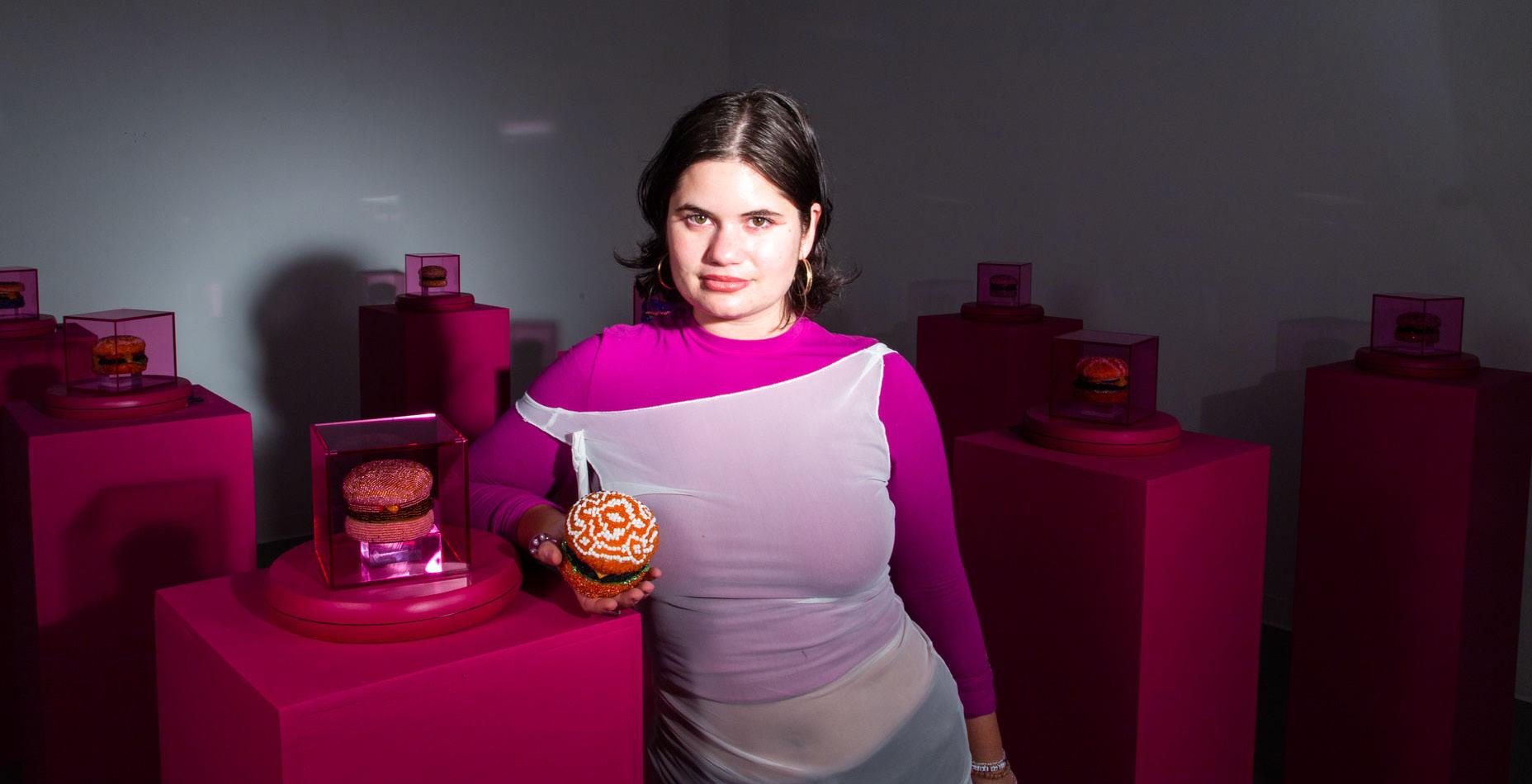
If you’re no stranger to endless scrolls on your TikTok FYP (For You Page) during lulls in the workday, your evening commute, or late at night before you fall asleep, chances are you’ve seen Vita Kari and their art on your phone screen. They’re an LA-based artist known for out-of-the-box performance pieces. You’d probably recognize them as the person who asks, “Do you know what the craziest thing about being creative is?” before revealing that the hand holding a paintbrush to their face was actually a hyper-realistic photo on a piece of paper the whole time. The reception of their work online has made them into a Frida Kahlo for the digital age, often using their own image to express different sides of “the self” and their own gender identity. IN Magazine had the chance to chat to them about their art, where they got the inspiration for their live performance pieces, the beauty in becoming a meme and, of course, TikTok.
Millions of videos are shared on TikTok daily. They’re then fed into an algorithm that gives you the content it thinks you’ll like and engage with the most. Some of it is tailor-made for rage bait, dance trends or media promotion, but woven throughout is art. Social media platforms like TikTok have allowed artists like Kari a whole new way to share their art with the world. “So many would never walk into a gallery space unless they’re really right there,” says Kari. “So, the internet allows for so many to see work and engage with it that maybe otherwise they wouldn’t have.”
Kari says their journey with sharing their art online started with a fascination of “the self” and really wanting to push the boundaries of what that could be. They say they actually started with music, but although they enjoyed the ritual of people gathering to witness a performance, the act of singing wasn’t really for them. “I really loved the idea that you can have a group of people around and play with the expectations of what they were hoping for at that moment,” Kari says. Their art is also heavily centred around different ways they can perform various facets of their gender expression online. Their “Craziest Thing” series was born from playing with the “femme influencer” voice we’ve all become all too familiar with, and then twisting it into something else to keep their audience on their toes.
They also always planned to go viral. In a world where many are scared of being mocked online by the masses, Kari was determined
to know what it would be like to be meme’d as a medium for art. When they’re told they’re reminiscent of a digital Frida Kahlo, they are honoured by the comparison…but point out that Kahlo’s work and image, once edgy and surrealist, has been replicated so much over the years that it’s become a meme in and of itself. “She’s lost the personhood in terms of how her image has been exploited, and essentially in some ways the replication of the self so many times is what a meme is, right? It’s the idea that has kind of lost the original meaning because it’s been replicated so many times.”
Aside from posting videos online, Kari has showcased their art in physical spaces, too. Recently they held a wedding where they married a digital version of themselves on a screen (you can watch small scenes from it on their TikTok). They explain that the ceremony starts like any other wedding: they’re walked up the aisle, there’s a wedding party, their sister cries…and then, at the altar, they’re met with a video of themself. Everything is timed perfectly so the responses feel real, and then all of a sudden, the video starts to glitch, and the wedding party starts repeatedly chanting, “The body will die but virality is forever.” They tell me the only people who knew exactly what was going to happen were their fellow performers, so all of their guests (including Kari’s young niece) watched in shock and awe as their body was dragged from the altar, never fully sealing the deal with the marriage.
They say the idea to marry themselves came from a fascination with AI chatbots, and an article about one who wouldn’t reciprocate romantic feelings back to the person using it. They were also partially inspired by Spike Jonze’s 2014 movie Her, which follows a man who builds a relationship with an operating system that eventually turns romantic. “We’re all, in a way, in charge of the autonomy of our virtual identities,” Kari says. It’s all part of the overarching theme that pretty much all of their art touches on of what it means to have a “digital self” and what each of our relationships are with our online identities, like meeting a doppelganger in the wild.
Of course, sharing anything online with an audience comes with feedback, some good and some critical. However, posting your art online as a queer artist invites a lot more to the comment section. I ask them about how they sort valid critique of their work and comments from internet trolls. “I think the day that discourse is not being had is the day that I die,” they respond. “Like if I’m
not making somebody upset, then I didn’t do a job, my job, right, you know?”
Kari welcomes all kinds of discussions in the comment sections of their videos, but some of the comments can go beyond critique or curiosity. They say that the negative comments they get on their work reaffirms to them that what they’re creating is having the exact divisive reaction that they wanted. They generally welcome all kinds of comments below their videos, aside from the transphobic ones. “Whether it’s heavy criticism from an incredibly academic standpoint that’s really coming at you, or just people being like, ‘I effing hate this,’ you want it all. Anything divisive is good. When people are just indifferent, that’s when your work isn’t strong enough.”
And while they’re not super comfortable being referred to as a queer trailblazer in the digital art space, they make sure to keep paving the way for other queer artists to be given a platform to share their work, too. They tell me they recently went to a Catherine Opie exhibit at Regen Preojects in LA. Opie is a fine-art photographer who’s well-known for her portraits of the Los Angeles leather-dyke community. Her photos study the connection between mainstream society and life on the fringes of it, through both portrait and landscape photography. “So many of her photos honestly looked a lot like the events I go to today and I’m like, ‘Could this have just been taken like this weekend?’ I was shocked, actually, at how much has almost not changed in terms of the trans and queer community. It looks very similar,” Kari says.“ It looks like a Saturday night, but for her to have those images and to put them out there was a big deal, right? And I really take that for granted.”
Kari mentions that they hope that their art has helped pave the way in online spaces for other queer creatives to be seen on the main pages of social media sites, since queer content is so often held back from being promoted the same way other content is. The only way that a queer-centred algorithm can be built is if you engage with queer content often. They know that as a queer artist, their work getting repeatedly pushed to the front pages comes with “a million privileges,” and that isn’t lost on them.
“I think for a lot of people, maybe it’s the first time they’re running into they/them discussion fights in the comments, potentially because it’s the first time it’s come up on the mainstream FYP. So maybe one day these types of videos will be normalized, and I hope that is something I’ve opened the doors to in some way,” they say. “I hope one day we can all post our videos and when it hits the mainstream pages, it won’t be a war zone in our comments over pronouns.”
Algorithms and trend cycles are short, and, unsurprisingly, Kari doesn’t really subscribe to the time frame of the traditional lifecycle of a trend. They’ll do something until they’re personally over it. “I’m a series-based artist and there are so many different people that work in different ways, but I have always been a series-based person. As a performance artist and as a video artist, or even as somebody that makes objects, everything is series based,” they say. They tell me they’re currently working on a series recreating their grandmother’s rugs. “I will squeeze every inch of interest out of that. And then when I’m bored, I will never do it again”

(although, they add, they’ll never rule out revisiting past projects if they start to feel fresh again). They agree their content works in a trend-based video economy, but have no qualms about going past the sweet point of relevancy in order to further explore the personhood of memes. “I still have work to do to see what that looks like.”
They reveal their biggest dream is to have their work projected on the Las Vegas Sphere, but they’re also the most proud of their dog, their relationship with their family, their partner and their community. They say the craziest thing about being creative actually is that they can walk around their hometown of Los Angeles and be stopped by people who know their videos from social media, but no matter how much things may change or how many views their videos get, in some ways they’re still just their Grandma Rita’s grandchild. Especially at LA’s Canters Deli, where their Grandma Rita is an icon herself.
Kari encourages everyone to get creative, with whatever you can find around the house. “I think that’s the fun part about this: you actually don’t really need anything specific. You don’t really need anything beyond the printer in your house, if you have one,” they say. Whether you decide to trick perspective using hyper-realistic printouts of your hands on video, marry a digital version of yourself to highlight the autonomy of our online personas, or put your own spin on a nostalgic piece of your childhood, the craziest part about being creative is that anybody can tap into it.
Kari has shown us that art is out there waiting to be created and shared in all the fun and wild new ways we can come up with. Their authenticity shines through every piece they think of and every post that comes across our FYP. They’ve proven that shortform video can also be thought-provoking art pieces that explore complex ideas worthy of discourse and celebration. Luckily for us, their art will be there to spark a conversation and inspire others to create their own, too.
Disco queen Thelma Houston opens up on serving, surviving and slaying five decades with the LGBTQ+ community on the dance floor
By Elio Iannacci

Few singers have seen the world change – and helped it change – in the ways Thelma Houston has. The 81-year-old talent has been recording, performing and promoting music over the course of 12 US presidents and eight recessions. Her place in music history, while not properly defined by the media or musicologists, is critical for those who view the dance floor as the starting point for movements, protests and societal transformations.
As her cameo in the upcoming BBC documentary, Disco: Soundtrack of a Revolution, can attest, Houston’s place in the genre was not as someone who was simply in the eye of the glittering ’70s storm – she was a forecaster. Working with queer musicians such as Sylvester and singing for LGBTQ+ audiences well before most of her contemporaries caught on to the benefits of doing both, Houston tapped into the community by immersing herself in it. Unlike many of her Motown counterparts – who saw disco
You’ve recorded more than 17 studio albums – do you have a favourite?
I honestly don’t even know how many I’ve recorded because I have been in the studios since the ’60s, but my very first record, Sunshower, is still my favourite. It was written and produced by Jimmy Webb. I was enjoying it so much because I never felt pressure or anxiety to get a hit. We just went in and cut great songs. I wish all new artists get that same experience. He would ask me if I liked songs before I recorded them – which wasn’t always the case for other projects.
Sunshower has your cover of ‘Jumpin’ Jack Flash’ by The Rolling Stones. Your vocals are so ferocious on it that the bridge sounds like a volcano erupting. How was your throat after you recorded it?
Sore. Let me tell you, that’s the one song that I did not want to sing. I had no idea what it was about but was just told it was about pain, so it sounds very raw. For Sunshower, I picked everything that I wanted to do – which was unheard of for any artist, especially for many Black female singers, at the time. So I thought to myself, ‘Thelma, don’t be – I won’t say the word, but it starts with a ‘B’ and ends with an ‘H’ – and I recorded it with the same sort of passion Mick Jagger had. I’m so proud of that song now because I’ve never sounded that way since.
as a passing fad – Houston embraced the genre wholeheartedly, releasing the now-legendary album Any Way You Want It in 1976 and unleashing the goliath hit, “Don’t Leave Me This Way” (after cutting three R&B-fused pop albums).
Houston’s non-stop travelling, recording and promoting hasn’t stopped since her disco takeover. She averages 200-plus bookings a year worldwide, most of them for global LGBTQ audiences – crowds she credits for keeping her art “alive, well and kicking.”
This year, Houston is powering up once again, riding out the results of her recent, jaw-dropping star turn on The Masked Singer by headlining at Indianapolis, Oakland, St. Petersburg and Toronto Pride. Between rehearsals, touring and taking care of her greatgrandkids, Houston chatted with IN about the epic twists and turns of her 56-year career in music.
“ How was your throat after you recorded ‘Jumpin’ Jack Flash’?” “Sore.”

Recently you were on The Masked Singer and sang ‘Good Times’ in disguise. It was from the hit TV show of 1974. Why this song? Those lyrics are so perfect for right now. Think about it: ‘Not getting hassled, not getting hustled, keeping your head above water’ – so many people who are having a tough time can relate. This is exactly where so many of us are at right now. It is an anthem for today and so relevant. And I had to sing it in this contraption where I could barely walk!
A track you released in 1972, called ‘Black California,’ is centred on the fight against inequality. Did it feel autobiographical? Yes. I lived in Mississippi until I was 10 years old – segregated in an all-Black community. I found out that once you cross a bridge, a creek divided the white part of town from the Black part. When I moved to Long Beach, California, I was placed in integrated classrooms, so I found out fast that I didn’t have the same opportunities.
What was the first experience you remember having with discrimination as it pertains to your career?
When the Sunshower album came out – the industry didn’t know how to promote it or me because I was this Black girl wearing an Afro and no shoes and singing uplifting songs. They felt I should be singing sad songs and blues only. My songs didn’t get promoted, and it came down to the fact that they thought Blacks should only sing R&B and whites [should] sing pop and rock and roll and country. So that was my rude awakening.
Your hit disco song, ‘Don’t Leave Me This Way,” is still charting after it was released 48 years. Is it a badge of honour?
Oh yes. Every time I perform it, I get that feeling of accomplishment, of overcoming the obstacles because people – from all walks of life – sing along and audiences are always waiting for me to sing it when I get on stage. When I do sing it, I don’t think of a man who I am begging to come back to me – I have never and will never be that kind of woman. In real life, I would never say ‘Don’t leave me this way’ to anyone.
Few people know that your version of ‘Do You Know Where You’re Going To’ – the theme song from Mahogany – is the original. Were you upset when the record company stopped it from a wide release and gave the song to Diana Ross? At the time, Motown said they didn’t think the song was that good. What hurt me was that the only thing that was changed for the Mahogany soundtrack was a couple of lyrics. Other than that, it’s the exact same song – sung my way. So, yeah, that was very hurtful to me. They ended up releasing [it] in Europe long after I had left the label.
What did you learn from that experience?
I didn’t let it define me. You cannot let things like that crush you because it happens a lot in this industry. You cannot stop working when you get rejected. I motivated myself to keep going.
You have so many songs that are way ahead of their time – songs like ‘Cheap Lovin’’ and ‘Midnight Mona.’ You were talking about women being really sensual before so many other people. Did you feel like a feminist pioneer?
I was mainly just hunting for good stories. Donna Summer’s ‘Love to Love You Baby’ was a very successful song and it did not have

a lot of lyrics. Very few people are able to carry that off, and she was one of them. I have to have a point of view and a song that sounds like a novel – one that has a beginning, a middle and an end. I was raised by a very independent woman. My mother was liberated; she was self-reliant and a single mother, and she raised me and my two sisters. So my image of women was always strong because my mom was my guide.
How would you describe the character in ‘Midnight Mona’ and ‘Cheap Lovin’’? She’s like, ‘Well, I’m choosing my fate. I’m dealing with these men, and I could leave them or not, and I am my own woman.’ I have friends that feel their life is not complete if they don’t have a partner in their life. That’s kind of sad. It’s great to have a man, but then also, if you don’t have it, that doesn’t mean life is terrible.
Do you think it is especially challenging for relationships to flourish as an artist?
Honey, I had three marriages. I hate to talk about them because they’re all passed away, rest in peace. My first marriage – and the father of my children – didn’t work because we were both way too young. I was 18 and he was 19 and [we] had a child right away!
What advice would you give to singers who are thinking about getting into a serious relationship?
People are not always truthful. If the person you’re with doesn’t know all the rules that come with being with a singer or an artist –especially one who tours – it’s really going to be hard for them to be away from you. Your career shouldn’t be a problem.
One of the reasons why the LGBTQ community is drawn to you is that you have always been so honest. Is it hard to always be so straightforward?
It’s easier to be truthful than it is to lie. It’s much easier to just be who you are.
When you look back at the decades of how you celebrated Pride, what comes to mind?
There’s a lot of work that needs to be done. We’ve made a lot of progress, but there’s so much more to go. You know? There’s still so much to learned from someone like [disco singer] Sylvester. Whenever I hung out with him, it was always the same. He was very dedicated to his community and to his art, and still managed to be a very good person. He didn’t let the lack of progress get him down.
What other queer artists would you say have had a great impact on your art and life?
A friend I grew up with named Clifford Peterson – he was a wellknown hairstylist. When I was a kid, I remember that he was always styling his aunt’s, niece’s and mother’s hair, and he turned to be one of the greats here in Hollywood. He helped me with looking at fashion. There has not been anyone like him for me since. My makeup person, Rudy Calvo, really understood how to make me look as good as I felt.
Barbra Streisand has said that early collaborators who were queer were the only ones who helped her realize her own beauty. Was it the same for you?
Well, I never thought I was ugly, honey [laughs]. I would have a lot of self-doubt about my music but the gay men I had around me were like a pep rally. They would always be very direct with a ‘Oh girl, this is fabulous,’ or ‘Keep your head up,’ or they’d turn around and spell it out with a ‘This song or outfit ain’t it, girl – it’s not going to work.’ You need that honesty in this business.
Speaking of honesty, let’s talk about your track, ‘Stealing in the Name of the Lord.’ It has lyrics that talk about a ‘lying,’ ‘parasite’ preacher figure who’s asking for money from his congregation but offering nothing but empty promises. Do you think this song accurately reflects what America is still going through?
Yes, specifically about the hypocrisy in the church. I do still see it going on with people like Donald Trump [the former president is currently selling Bibles to fund his campaign]. Even though

there are Christian people who don’t necessarily believe that he is a great person, they support him because they feel that he’s going to [get] some of the things done that they want to see done – like abortion rights.
You re-recorded the song ‘Love Train’ by the O’Jays. Why? It’s just as relevant because I truly believe love is the only superpower that can knock out all that deception. The lyrics to ‘Love Train’ are so uplifting, and when I do it live, the crowd loves it.
When Jimmy Somerville released his version of ‘Don’t Leave Me This Way,’ it was dedicated to Margaret Thatcher [British prime minister at the time] in order to critique her. What do you remember the most about his interpretation?
I never saw his video or knew the politics, but I think going to one of his shows and shocking him during his live version of ‘Don’t Leave Me This Way’ is what I remember most. His manager gave me a microphone and we hadn’t told Jimmy I was there, but I walked to the stage while he sang it and joined him. What a good moment. He didn’t say, ‘Shut up’ – he was great. It went over really well.

By Michele Yeo
“I didn’t want anyone to tell me what I could and couldn’t do,” says Cyndi Lauper in her new biographical documentary, Let The Canary Sing. “To pigeonhole people…is silly.”
With an illustrious career spanning more than four decades, pigeonholing Cyndi Lauper is no easy feat. She’s a singer, a songwriter, an innovator, a Grammy winner, a Tony winner, an outspoken feminist and, as Let the Canary Sing reminds us, a proud long-time ally.
In addition to chronicling her humble New York beginnings, her scrappy entrance into the music industry, her phenomenal success in the ’80s and her foray into special projects like Broadway, the documentary highlights Lauper’s unwavering support of the LGBTQ2+ community. It’s a devotion that started early in her life after her sister, Elen, came out.
“When my sister came out, I was like how I always was with my sister,” Lauper recalls. “I was like, ‘I was born to be your friend so I don’t care who you bring around or what you do, you just can’t ditch me.”
The Lauper sisters endured a chaotic home life with an abusive stepfather, so when Elen left home, Cyndi soon moved in with her sister. Cyndi became fast friends with Carl Eagleston and Gregory Natal, a gay couple who also lived in the building. “They were like family,” says Elen in the doc, “especially Gregory.” Carl and Gregory, along with many of Cyndi’s other friends, are featured in the music video for her song “She Bop,” and Gregory would later provide inspiration for one of Lauper’s trademark songs.

“ WHEN MY SISTER CAME OUT…I WAS LIKE, ‘I WAS BORN TO BE YOUR FRIEND SO I DON’T CARE WHO YOU BRING AROUND OR WHAT YOU DO, YOU JUST CAN’T DITCH ME.”
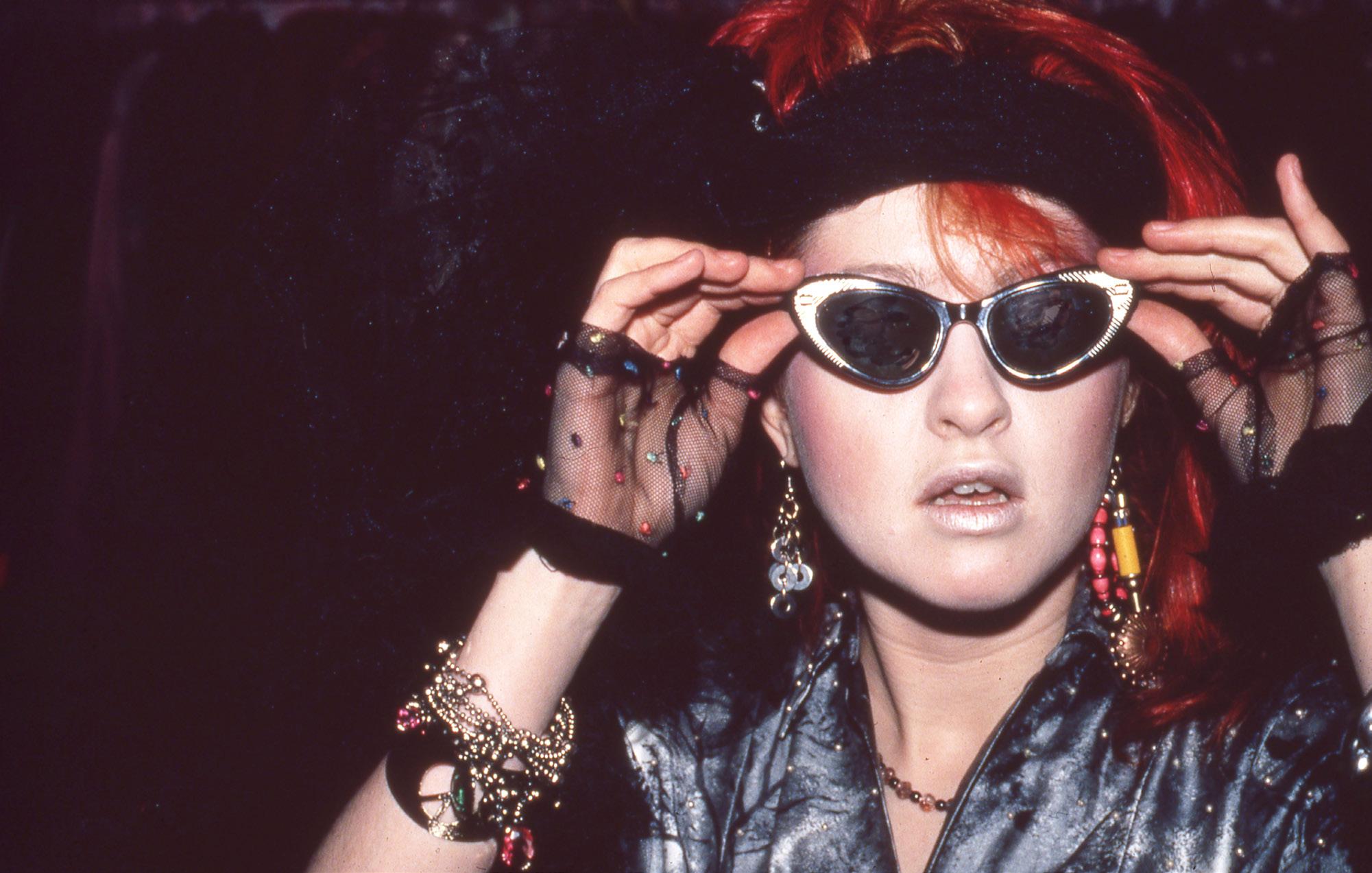

“I’M KNOWN AS AN ENTERTAINER OR A SMALL GAL WITH A BIG VOICE OR A BIG MOUTH, AND I DECIDED A WHILE BACK TO USE MY BIG VOICE TO BE THE VOICE FOR THE VOICELESS.”
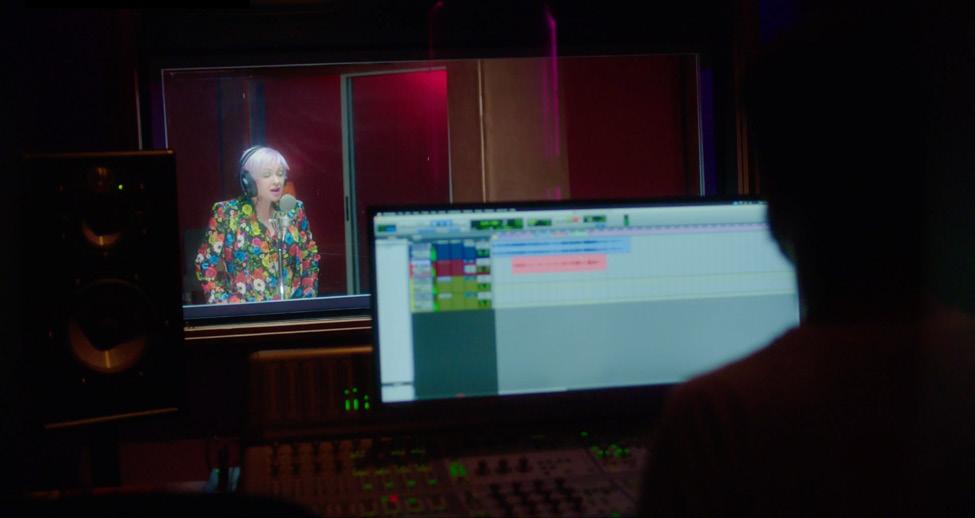
As her success, profile and fame grew, so did Lauper’s inclination for allyship. During a 2014 speech, Lauper declared, “I’m known as an entertainer or a small gal with a big voice or a big mouth, and I decided a while back to use my big voice to be the voice for the voiceless.”
Fans will know of Lauper’s dedication to the issue of homelessness among LGBTQ2+ youth, which led her to establish the True Colors Foundation in 2008, which, according to its website, has a mission of finding “innovative solutions to youth homelessness by focusing on the experiences of those impacted – LGBTQ+ and BIPOC youth.” In Let The Canary Sing, Lauper’s sister Elen explains how that came about. “Her fans would write her and talk about being thrown out of the house because their families rejected them.” Lauper adds: “What I saw was so bad and so unjust.… Letter after letter was someone who was gay, lesbian, a bisexual person, a transgendered person, anywhere where you don’t fall into line.”
Lauper has spoken passionately about the topic in subsequent years, including testifying in 2015 in Washington, DC, at a Senate appropriations subcommittee meeting about youth homelessness. “No young person should be left without a home because of their sexual orientation or their gender identity,” she implored. Additionally, for 10 years, Lauper staged her annual Home for The Holidays concert – an evening of live performances from her and musical friends with proceeds going to her True Colours Foundation.
Since its initial release in 1986, “True Colors,” the title track from her second studio album, has become somewhat of an anthem for

briefing ahead of US President Joe Biden signing The Respect For Marriage Act, which codified same-sex and interracial marriages. She said: “Our families, mine, and a lot of my friends, and people you know, sometimes your neighbours, we can rest easy tonight because our families are validated and because we’re allowed to love who we love.”
This year, at West Hollywood’s Pride celebration, Lauper’s longtime allyship will be recognized as she’ll be named the Lifetime Ally Icon at the city’s Pride Parade, becoming the first person to receive the special designation. “Cyndi Lauper embodies the spirit of inclusivity, unity and vibrancy that has defined West Hollywood throughout its history,” said City of West Hollywood Mayor John M. Erickson in a press release. “Her unwavering dedication to advocacy throughout the years, coupled with her unparalleled musical legacy, makes her a perfect fit for this moment in time as Lifetime Ally Icon as we celebrate WeHo Pride 2024.”
And in true Cyndi Lauper fashion, she just wants to have fun with her fans, saying, “I love Pride, I love West Hollywood! I love a parade.”
“ WHEN ‘TRUE COLORS’ CAME TO ME [WAS] WHEN GREGORY WAS DYING OF AIDS. I WANTED TO SPEAK TO A HUMAN BEING IN THE MOST TENDER SPOT.”
Lauper’s LGBTQ+ fanbase. “‘True Colors’ had a resonance with queer people because so much of how we communicated was in code, because queer people really weren’t allowed to be queer and out,” explains Billy Porter in the documentary. “So it was our straight allies who were having the conversations that the actual queer people in the industry could not have for fear of exposure and then rejection.”
In fact, it was Lauper’s long-time friend, former neighbour Gregory Natal, who provided some initial inspiration for the song. “When ‘True Colors’ came to me [was] when Gregory was dying of AIDS,” she explains in the film. “I wanted to speak to a human being in the most tender spot.”
Gregory’s AIDS diagnosis impacted the singer immensely. “It totally freaked me out because in those days, it was a death sentence,” she explains. “I went to the hospital to visit him. My friends, they didn’t want me near him because nobody knew about AIDS.” Like Madonna, Princess Diana and Elizabeth Taylor, other female allies and AIDS advocates of that time, Lauper didn’t let fear or misinformation about the disease keep her away. “When he passed from AIDS,” explains Elen, “that almost killed her. It struck her deeply in her soul. She tried everything to help him.”
Over the years, Lauper has continued to push for LGBTQ+ equality. In December 2022, she spoke at a White House press

Let the Canary Sing, the new documentary about Cyndi Lauper, premiered at the Tribeca Festival and is now streaming on Paramount+ in Canada and the US.
The ’80s pop icon has proven herself to be a true ally of and advocate for the LGBTQ+ community over the years, as shown by her consistently outspoken political stance and her (meaningful) timeless songs
By Christopher Turner
Cyndi Lauper burst onto the music scene back in 1983 with the release of her smash album She’s So Unusual, and helped define a new era of pop music that evolved alongside MTV. With the release of that album, she made history by becoming the first female artist in history with four top-five songs from a debut album. With a string of top 10 hits and two Grammy wins (including one for Best New Artist), and her over-the-top looks, Lauper instantly appealed to queer audiences, but it is thanks to her consistent advocacy and her long-time activism for LGBTQ+ rights that the quirky vocalist with her four-octave vocal range is still celebrated decades later.
Lauper has always asserted that she originally became involved in the fight for gay rights because her sister Ellen is a lesbian, but throughout the years she has proven herself to be one of our greatest allies… time and time again. Lauper fully embraced the gay community, and we embraced her back. She has written inspiring songs like “True Colors,” performed at hundreds of Pride events (including World Pride) around the globe, and worked tirelessly to support gay rights and raise awareness about youth homelessness. She even co-founded a non-profit organization dedicated to combatting homelessness among LGBTQ+ youth who don’t have anywhere to go. Her music career is so intertwined with activism that the recently released Allison Ellwood documentary Let the Canary Sing (now streaming on Paramount+) is just as much about Lauper’s music as it is about her activism around LGBTQ+ rights and visibility.
Most recently, Lauper was named the Lifetime Ally Icon for the 2024 WeHo Pride Parade in West Hollywood, the first person to receive that designation.
“Renowned for her groundbreaking contributions to music, activism and LGBTQ+ advocacy, Cyndi Lauper epitomizes the ethos of pride, inclusivity and resilience,” says a press release from the City of West Hollywood and WeHo Pride producer JJLA.
“With a career spanning decades, Lauper has left an indelible mark, especially within the LGBTQ+ community,” the press release notes. “From her iconic hits like ‘True Colors’ and ‘Girls Just Want to Have Fun,’ Lauper’s repertoire resonates as a poignant soundtrack of the LGBTQ+ equality movement and beyond.”
Here’s a walk down memory lane with a look back at five of Lauper’s most supportive musical moments.

The first single released from Lauper’s second studio album of the same name in 1986, “True Colors” went on to reach number one on the Billboard Hot 100 on October 25, 1986. It was an instant mainstream hit and over the years became a popular anthem for the LGBTQ+ community. In various interviews, Lauper elaborated that the song had first resonated with her during its production because of the recent death from HIV/AIDS of her friend Gregory Natal. And, thanks to the song’s lyrics and empowering message of acceptance and authenticity in the face of prejudice, the song resonated with the LGBTQ+ community.
The song further cemented its connection to the LGBTQ+ community in 2008 when Lauper co-founded the True Colors Fund (now known as True Colors United), a non-profit organization dedicated to eradicating LGBT youth homelessness. “We each have a personal responsibility to make sure LGBTQ+ youth are treated with dignity and respect,” Lauper says on the True Colors United website.

Of course, you know that Lauper’s 1983 megahit “Girls Just Want to Have Fun” from her debut studio album, She’s So Unusual, was hailed as a feminist anthem and ultimately transformed into a rallying cry for sexual equality – but it wasn’t the only time the song would make a statement. In 1994, Lauper released her Twelve Deadly Cyns...and Then Some compilation album, which featured a reggae-tinged arrangement of “Girls Just Want to Have Fun” with an interpolation of “Come and Get Your Love” by Redbone. To promote this new version, a music video was produced – directed by Cyndi Lauper herself – which featured 12 fabulous drag queens dancing by the 12-storey Unisphere in Queens from the 1964–65 World’s Fair.
Interestingly, in the summer of ’94, Lauper did a European tour with those 12 drag-queen dancers, and the experience inspired another gay anthem.
HBO’s critically acclaimed show about modern-day gay life in San Francisco ran from January 19, 2014, to July 23, 2016
By Matthew Creith
July marks the anniversary of the conclusion of the series from All of Us Strangers director Andrew Haigh after two seasons and a TV movie…
Looking debuted 10 years ago on January 19, 2014. Yes, you read that correctly. Ten years have passed since Patrick and company stormed the streets of San Francisco to give the gay community a bit of modern-day romance and friendship and highlight the struggles still felt by a population seeking acceptance. However, Andrew Haigh’s televised fictional study of gay male relationships holds to its initial concept, mainly due to the attention paid to the characters and, subsequently, the actors who embodied them.
I recently rewatched Looking, the first time I had revisited the show since the second season was cancelled in 2015 and Looking: The Movie premiered in 2016. Before Looking premiered, I was deeply in the closet and unsure of who I was as a person. Actually, I knew who I was, but I simply couldn’t admit it to the world. Then, this weirdly grounded series came into my life, and I found myself waiting for new episodes to release while I consumed gay culture via a television screen rather than experiencing it in the outside world for myself.
I immediately took to the Patrick character, played perfectly by Tony-nominated actor Jonathan Groff. Patrick’s innocence and
aw-shucks attitude towards life mirrored my own, not to mention his undying support and love for his friends Dom (Murray Bartlett), Agustin (Frankie J. Alvarez) and Doris (Lauren Weedman). It was the first time I had ever watched a television series devoted to making sure gay men were represented realistically, at least by the standards I envisioned for myself when I would eventually come out.
By the time the series left prime time in July 2016, I had a boyfriend and had come out to everyone I knew…to great success, I might add. That’s not an accident. Looking made it possible for someone like me to see himself on television, something previous shows like Will & Grace and Queer as Folk hadn’t. It’s because of how real these characters were, many of whom were similar to my age at the time, and the familial bond they formed that helped give me the strength to be true to myself.
I highly doubt I am the only one.
As we find ourselves celebrating Pride Month, in addition to the anniversary of when Looking went off the air, here is a list of the unbelievably talented actors who graced the small screen in defence of changing tides. Many of them have gone on to become household names:

A Tony nominee well-liked for his Broadway performance in Spring Awakening, Jonathan Groff had made his mark in television as the competitive Jesse St. James in Ryan Murphy’s Glee. Taking to more adult roles, Groff took charge of his career and was cast in Looking as the lead character, Patrick, a buttoned-up video game designer looking for love in all the right and wrong places. Tied to the friendships he’s made in his adopted city of San Francisco, Patrick falls in and out of lust for his boss, Kevin (Russell Tovey). In the meantime, he establishes a romantic relationship with barber Richie (Raúl Castillo) after they meet on the bus.
Groff’s talent has not gone unnoticed. While working on Looking, he continued to shine on Broadway, film, and other television shows, solidifying his position as one of the most sought-after performers. His roles in the megahit animated film Frozen and its triumphant sequel, his Tony-nominated performance as King George III in Lin-Manuel Miranda’s Hamilton, and his co-starring role on the Netflix FBI crime drama Mindhunter are all testaments to his success and recognition in the industry.
The out actor was recently nominated for a Tony Award yet again for his performance alongside Daniel Radcliffe in Merrily We Roll Along, a Stephen Sondheim musical.
“The girth from Perth,” as future co-star Nick Offerman would refer to him, out actor Murray Bartlett had made waves in his native Australia before trying his talents on American television. He portrayed Dom Basaluzzo in Looking, an older and more experienced gay man destined to become a restaurant owner while attempting relationships with men his age and younger. Often looked upon by his friends as a guide through gay adulthood, Dom represents aging within the gay community.
Bartlett provided a realistic portrayal of emotional depth in Looking before he starred in the first season of Mike White’s fantastic The White Lotus as a hotel manager at a Hawaiian resort who hates his job and everyone around him. His work on The White Lotus springboarded the former character actor to international acclaim, winning the Primetime Emmy Award for his performance. This has so far taken him to other television projects, including recent appearances on Hulu’s limited series Welcome to Chippendales and the postapocalyptic series The Last of Us, leading an episode alongside the aforementioned Nick Offerman.
Bartlett will next be seen in the ensemble horror film Opus, co-starring Ayo Edebiri and John Malkovich.

One of the more exciting and frustrating characters in Looking, wannabe artist and Patrick’s best friend, Agustín, is portrayed in the series by Frankie J. Alvarez. Though Agustín’s contentious relationship with drugs, alcohol and sex made him a unique character within the world of the show, Alvarez gave him room to grow, especially in the second season. His interest in threesomes ruined his relationship with Frank (O-T Fagbenle), and his drive to be closer to an HIV+ love interest (Daniel Franzese) made Agustín fascinated with helping LGBTQ+ youth. You never knew where Agustín would land, but you knew it would be somewhere adventurous.
Alvarez attended Juilliard before his time on Looking, and has since appeared in everything from Madam Secretary to The Blacklist. A tireless theatre performer, Alvarez has worked on the stage in productions like Death of a Salesman and, most recently, in Wet Brain off-Broadway.
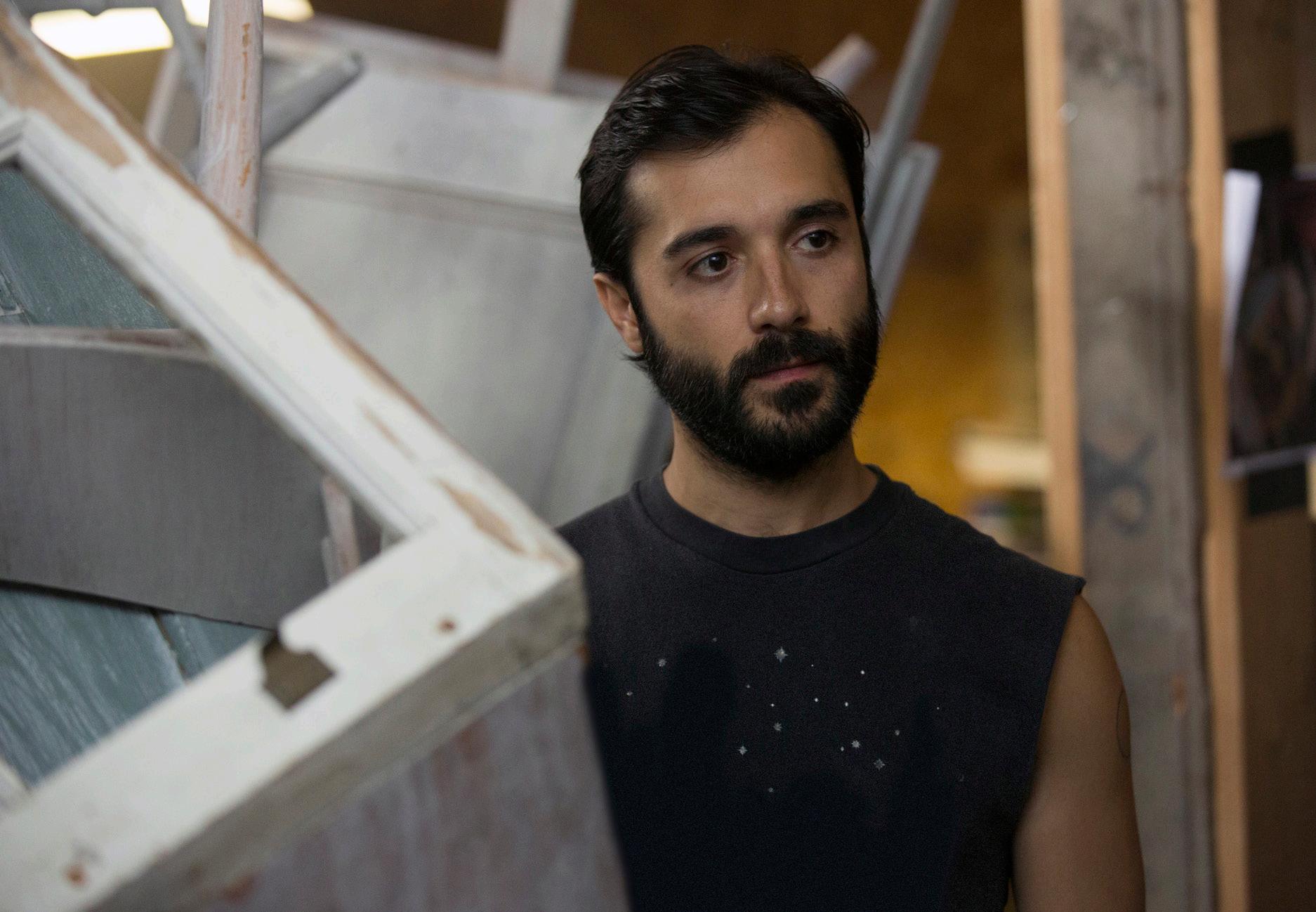
Out actor Russell Tovey was introduced to American audiences – and seeped into many gay men’s obsessions – when he debuted on Looking as Patrick’s handsome boss, Kevin, in the first season. Though the two characters met while flirting at a party and playing video games, Kevin and Patrick’s professional endeavours ushered in some of the show’s steamiest sex scenes as they crossed personal boundaries. Though Kevin is in a longterm relationship when we are introduced to him in Season 1, he becomes Patrick’s love interest by the second season.
Tovey had worked steadily for years, both in his native Britain and on American television, before audiences really got to know him through Looking. He starred in films like The History Boys and Pride while cultivating a persona on television in shows like Being Human and Doctor Who. Since being ‘discovered’ on Looking , Tovey has subsequently co-starred on several high-profile television shows, including Quantico , playing superhero The Ray on several CW shows like Supergirl and The Flash, and most recently appearing in roles on two Ryan Murphy vehicles: American Horror Story: NYC and Feud: Capote vs. The Swans

As Dom’s wise-cracking roommate and one of the only female characters featured on Looking, actor Lauren Weedman perfectly embodied the hilarious Doris. Like Dom, Doris grew up in Modesto, Calif., and fled to San Francisco for a more interesting and fulfilling life. Her character is not completely fleshed out until the show’s second season, when Weedman gets some much-deserved screen time and attention as Dom’s supportive best friend.
Weedman is a television veteran, featured in series like Hung, The Daily Show with Jon Stewart, Curb Your Enthusiasm, True Blood, New Girl and 2 Broke Girls…all before she starred on Looking. Since Looking ended, the talented actor has continued her television career by appearing on recent Hacks, Euphoria and Abbott Elementary episodes.


Absolutely no list concerning the cast of Looking would be complete without everyone’s favourite character and actor from the show, Richie, played by Raúl Castillo. The moral compass and often Patrick’s North Star, Richie is a barber and proud of it. Growing up working-class in northern California, Richie is unique in Patrick’s life as a sensitive soul who doesn’t take crap from anyone. Hot, funny and altogether suave, Richie is the embodiment of what Patrick is “looking” for, though he sometimes doesn’t realize it.
Castillo was fresh-faced when he first starred on Looking, but he has taken the entertainment industry by storm ever since. A Texas native, Castillo has appeared in numerous film roles, including 2019’s Knives Out, six films in 2021 alone, and a supporting role in 2022’s The Inspection, which earned him a nomination for the Gotham Independent Film Award. The magnificent actor recently appeared on American Horror Stories and will soon be seen in the sequel to 2022’s Smile, releasing later this year.
Chris Perfetti has come a tremendously long way since his days on the second season of Looking as the new man in Richie’s life. After Patrick and Richie parted ways, before they reconciled and became interested in each other again, Perfetti’s character of Brady was the only thing standing between Richie and Patrick’s love. Slightly annoying and a bit of a know-it-all, Brady was never Looking fans’ favourite character.
However, Perfetti’s career has skyrocketed since appearing on the HBO series, particularly because of his background in theatre. He has become a journeyman within the theatre world, appearing on stage in no less than eight productions both on and off Broadway. But his co-starring role as nerdy teacher Jacob Hill on Abbott Elementary has given Perfetti room to brag in recent years. The Emmy-winning comedy was recently renewed for a fourth season, which means Perfetti will continue to show up on television screens for the foreseeable future while juggling a fantastic theatre career.
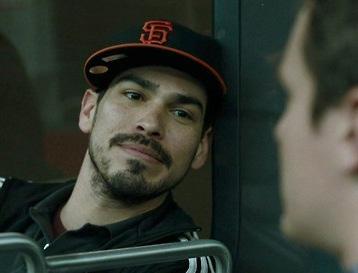

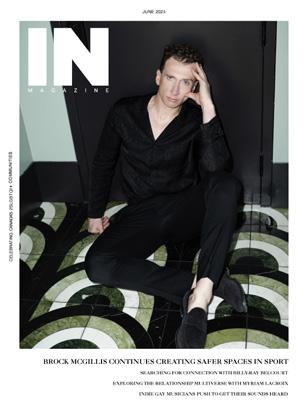
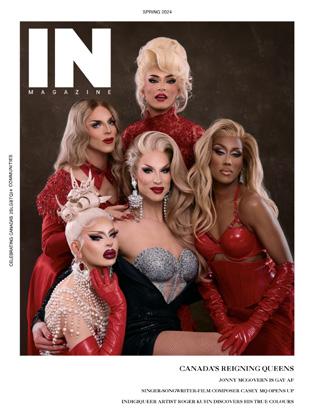
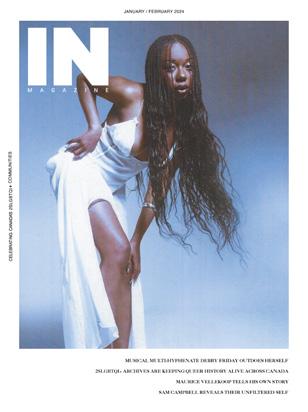


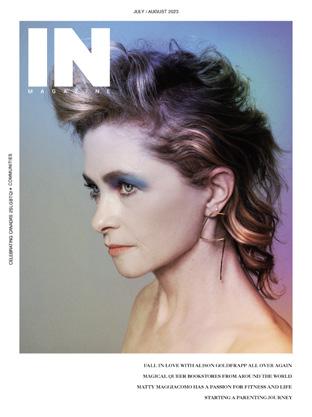

Pride Month may be over, but a London, Ont., brand is making sure you have access to Pride products 365 days a year
By Stephan Petar

“Shocked” and “gobsmacked” is how the founders of Rainbow Certified, Sarah Couvillon and Rachel Newby, described their reaction at seeing their products at a Kohl’s store in the US for the first time. “We had to ask one of the workers if they had them out yet,” says Couvillon. “They were just setting up that floor display. We were such eager beavers to see them in person that we came a bit too early.”
The inclusive apparel and accessories brand was part of Kohl’s Pride celebration, a partnership that bloomed thanks to TikTok, after a buyer from the department store found them on the platform. Rainbow Certified products were carried in over 400 stores across the US and online.
This partnership is another milestone for the brand, which launched in August 2020. According to their website, Rainbow Certified started “with two girls falling in love,” who wanted to create a fun, inclusive and positive brand with funky designs for people of all ages to enjoy, as well as to celebrate the 2SLGBTQI+ community. “We wanted to make a brand that celebrated Pride all throughout the year and not just in June,” said Couvillon. “We found it really
hard to find any sort of Pride merchandise during those other months of the year.”
The brand carries an array of items, including stickers, pins, apparel, tote bags, key chains, glassware and more. Their designs feature pronoun identifiers, the flags of the 2SLGBTQI+ community, and encouraging and supportive messages…as well as cute dogs and a Prideosaurus.
“When I come up with products, I see what people are buying on TikTok,” Couvillon explains. “We also walk around stores that we like to shop at and I’m like, ‘That’s really cool. How can I use this in my business?’” They also look for product gaps in the marketplace and see how they can bring a queer lens to it, which Newby explains is how they came up with their queer Christmas penguin ornament.
Couvillon, who designs the products, says there is no rhyme or reason to what she comes up with. “I really wish I could tell you what goes on in my brain,” she jokes. “I look at things that I enjoy that maybe aren’t in the queer niche and then transform that.” Design
is also influenced by customers, especially when it comes to their ever-growing offering of Pride flag designs, which include the gay, lesbian, genderqueer, agender flags and more. “We take in all the feedback.… It’s a huge influence,” says Newby.
The brand’s customer base extends beyond North America, and it’s all thanks to TikTok, where they have more than 74,000 followers and one million likes. “We pretty much owe everything to TikTok.… The organic reach can get to literally anyone worldwide,” Couvillon says.
“It’s definitely how we found a lot of wholesalers in the United States,” Newby continues. “TikTok has been a huge influence for our business.” TikTok’s reach is a big reason why they ship to 23 countries including Germany, Australia, South Korea, Japan and Sri Lanka. They’re also in about 170 stores across the US and 20 in Canada, as well as some in the UK and France.
The brand has also seen a rise in orders from US states where anti2SLGBTQI+ laws and sentiment is high. “When we get wholesale orders from those regions, it’s like, wow. You know they’ve got the confidence to put products in-store that support the community.… It’s awesome to see,” Newby says, noting stores will stock up on items that say “Let Trans Youth Bloom” or “Let Queer Youth Bloom,” among others.
These orders showcase how their products are used to support activism, but there are other special moments in which their items are being used. “My favourite story is when someone ordered 15 rainbow pins and were like, ‘I’m using you to come out to my family. I’m giving everyone a little rainbow pin and coming out,’” Couvillon recalls. “Or we have parents that are like, ‘Hey, my son or daughter has come out to me and I want to make them this little gift as my support…’”
With all their success, the brand is naturally looking to grow. “We actually looked at our first warehouse,” says Couvillon, who notes it was about 1,600 square feet. “We keep moving to bigger houses to keep the business going. Right now we have a really great setup because we have a big third floor where the office is…but we’re outgrowing that.”

The pair currently run the business on their own, with Couvillon doing design and social media, and Newby focused on the behindthe-scenes tasks like SEO (search engine optimization), logistics and customer service. They hope to hire a staff member eventually, but for now they’re handling things with help from Couvillon’s parents.
Growing their apparel line will be a focus for the brand in the upcoming year. “We’ve got a lot of new T-shirts that we just launched.… There’s definitely more to come apparel-wise,” Newby says, teasing the possibility of hoodies and sweaters.
They also want to bring their products to more big-box stores worldwide. “The dream would definitely be Walmart and Target… and some European ones,” Newby says.

The bevy of hairstyling products for the new DIY hair-bonding trend promise great-looking locks and a whole lot of chatter
By Adriana Ermter
You’ve heard the word ‘bonding.’ Years ago, you probably said it to explain time spent with family or friends. Back then, it was the catchphrase – so much so that even my mom expressed it regularly, saying: “Oh, you’re bonding,” every time I’d hang out with my sisters. When this would happen, we’d roll our eyes before turning our attention back to the Mission Impossible movie we were watching on DVD. (Yes, DVD, not Disney+. It was that long ago.) Well, the word is back, but this time in relation to our hair. And not because we’re spending quality time admiring it in the mirror.
Hair bonding is the latest haircare trend that has everyone talking, from popular hair influencers on TikTok such as Leila Nikea and Abbey Yung to real-life hairstylists with millions of followers on Instagram like @HarryJosh and @GuyTang. It’s not to be confused with hair extensions, which can also be bonded (a.k.a. attached) to your existing locks; this bond is all about creating lush, healthy and strong hair. And with every glossy hair toss and reference to a drug or department store shampoo or conditioner that pops up on social media, the interest in bonding flourishes. So much so that a 2023 report by New York City-based AI beauty trend-tracking company Spate (founded by ex-Googlers Yarden Horwitz and Olivier Zimmer) noted that luxury label Olaplex with its bondbuilding products was ranked the year’s most searched haircare brand, with a monthly average of 663,200 searches. Because, after all, who doesn’t want great style?
Hair bonding 101
“Over the past few years, there has been a shift in consumer interest around hair and scalp health, and a big part of this is the accessibility to information and education on TikTok,” affirms Kristin Oliver, a senior brand manager with Dove. While the technical information about hair bonds – how they live within each shaft of our hair, act as the molecular bridges holding our strands together to ensure strength, resilience and elasticity, and serve as the scaffolding that determines our hair’s texture (straight, wavy, curly, etc.) and manageability – may not always be discussed, restoration of hair growth and health through bonding products is a very hot topic. “We know that women and men want expert hair-repair solutions that they know are going to work for them and [for] their hair type,” says Oliver.
Who needs to bond?
Specifically, bonding is beneficial for a hair type that can be described as broken, brittle, aging and/or dull – which, believe it or not, applies to all of us. Fact is, we weaken our hair bonds
every day, and the damage that ensues manifests in a number of ways. It could show up as all-over frizz or split ends after using the blow dryer or flat iron one too many times; or as a dry, dull texture after days spent outside in the sun, sweating in spin class or swimming in salt water and chlorinated pools. Or, if you’ve just had a chemical-based relaxer, perm or colour service, it might appear as a flat, matte shade of blonde, red, black, blue, pink, brown or any hair colour.
“Everything you do breaks the bonds in your hair,” confirms Teresa Bator, an Olaplex advocate, balayage hairstylist, and founder of her eponymous hair studio based in Vancouver. “You may not see the damage right away, but it’s there, and eventually your hair will feel coarse and dry and the ends or your layers will look thin and raggedy. Your hair will just hang and not have any swing or bounce. It happens easily, too, because we’re rough with our hair. Even over-combing or brushing it when it’s wet can damage it.” So we can put to bed the age-old theory that 100 brush strokes per day achieves healthy shiny locks.
Traditionally, these hair conundrums were resolved four to six times a year with a good cut at a salon and an intensive treatment administered by a professional stylist. But with increased access to home hairstyling, heat-based tools like hot rollers, electric Blue Ray scalp massagers, curling brushes and more – combined with a global hair colouring market that is, according to a 2023 report by Market Reports World, projected to grow from US$25 million in 2023 to US$30 million in 2029 – consumer demands have changed. We want more and we want it now, preferably in the comfort of our own home.
Between YouTube haircutting and styling tutorials, DIY home hair-colouring kits and in-salon services, “people are experimenting with different styles, colouring or bleaching,” explains Oliver. “With all of this experimentation and wanting to still have strong and shiny hair comes the need for bond-strengthening products to support all of those damage-causing activities.”
Salon-strength solutions
Not surprisingly, leading haircare companies like L’Oréal Professionnel Paris, Nexxus, Shea Moisture, Marc Anthony, Olaplex, Function of Beauty and Dove have responded. Their efficacious products, delivering everyday salon-quality results in the comfort of your own home, have democratized access to advanced, once in-salon only, haircare solutions.
Meticulously formulated to repair and fortify damaged hair bonds, each serum, clarifying scrub, mask and soothing cream harnesses the power of innovative ingredients to rejuvenate hair from within, addressing the root cause of damage and imparting strength and vitality to every strand. Bond-building ingredients such as amino acids, proteins, silk, peptides and bondamide work to re-establish broken bonds and shield hair from future damage. Shampoos enriched with these agents gently cleanse hair while reinforcing weakened bonds. Conditioners provide intense hydration and repair, sealing the hair cuticle to prevent moisture loss and minimize further damage, while masks, treatments and styling products penetrate deeply into the hair shaft to fortify, enhance and protect the hair’s integrity at a molecular level.
“These products repair your hair because their formulas’ ingredients are more intense than regular products and they’re very moisturizing, and there’s such a difference when you add moisture to your hair and scalp,” explains Bator. “You’re maintaining your hair’s health properly.”
The benefits are 10-fold, adds Oliver. She says the Dove Bond Strength range of haircare products can simultaneously reduce issues like frizz and split ends and increase shine, nourishment and bounce. “All while reversing the visible signs of three years of damage after one single use.”
seven seven
Here are of IN Magazine’s favourite hair bonding products
Dove 10-in-1 Bond Strength Serum Mask
($12 for 260 g, available at Shoppers Drug Mart)
This repairing mask penetrates the hair cuticle to reduce visible signs of extreme damage. It repairs and nourishes, reduces flyaways and split ends, detangles, adds the appearance of strength, restores bounce and shine, smooths strands and protects against future breakage.
Claim to bonding fame: Specially formulated for dehydrated and damaged hair that is prone to breakage. Its formula of bio protein care and peptides works to reverse 10 visible signs of damage – from boosting glossy shine and restoring bounce to detangling and smoothing for low-maintenance styling – in 60 seconds.
Function of Beauty PRO, Straight + Wavy Hair Bonding
Leave-in Treatment
($38 for 127 mL, available at Sephora)
This versatile leave-in treatment can be applied to wet or dry hair. Its innovative texture combines the performance of a deep penetrating serum with the rich smoothness of a cream for a luxurious haircare experience.
Claim to bonding fame: A blend of babassu oil, amaranth extract and adaptive f3 bonding complex infuses moisture and shine while targeting signs of damage to reduce breakage. Plus, it provides frizz control for up to 24 hours and heat protection up to 450°F.
L’Oréal Professionnel Paris, Absolut Repair Molecular Shampoo
($42 for 300 mL, available at Sephora)
This sulfate-free shampoo is ideal for hair that has been damaged from chemical treatments, colour or heat. It penetrates deeply to repair the hair’s molecular structure from the inside out.
Claim to bonding fame: Its exclusive technology – two per cent peptides bonder, a patented ingredient that repairs hair damage by rebuilding the hair’s molecular structure and five amino acids, a protein that strengthens and deeply nourishes hair – visibly fights two years’ worth of damage in just one use.
Marc Anthony Repair Bond + Rescuplex Defrizzing Smoothing Cream
($14 for 149 g, available at Shoppers Drug Mart)
As its name suggest, this cream smooths hair while providing frizz control and protection against humidity. It also strengthens hair, hydrates it and adds shine.
Claim to bonding fame: The cream’s formula is so effective – with its proprietary Rescuplex complex and blend of hydrolyzed quinoa, vitamin E and rice bran and rosemary oils – that a pea-sized dollop combed through damp hair can rebuild bonds and soothe a dry scalp and hair.
Nexxus Amino Bond Shampoo, and Conditioner
($19 and $20, respectively, for 400 mL, available at Shoppers Drug Mart)
Silicone and sulfate free, the shampoo gently cleanses, and the conditioner thoroughly hydrates damaged hair.
Claim to bonding fame: Both products contain the brand’s ProteinFusion, a blend of keratin protein and five amino acids (glutamic, cysteine, histidine, serine and glycine), which all collaborate to smooth, strengthen, minimize breakage and restore moisture, shine and elasticity.
Olaplex No. 3 Hair Perfector
($41 for 100 mL, available at Sephora)
A 10-minute leave-in, pre-shampoo treatment that reduces breakage and visibly strengthens the hair to improve the way it looks and feels. Its use should be followed by a shampoo and conditioner.
Claim to bonding fame: The brand, created by two PhDs of chemistry, is the OG of hair bonding. No. 3 Hair Perfector – its hero product – contains bis-aminopropyl diglycol dimaleate, a patented bond-building technology that provides structural repair to damaged hair.
Shea Moisture Amla Oil Bonding Oil
($69 for 100 mL, available online at www.amazon.ca)
A lightweight, multi-benefit oil that strengthens, moisturizes and protects against further damage. It can be used on its own or after shampooing and conditioning the hair.
Claim to bonding fame: Ideal for brittle, fragile and broken hair, the oil is fuelled with amla oil and Fair-Trade raw shea butter, which coats the hair’s cuticles to smooth frizz and lock in moisture.
Here’s the thing about navigating an open relationship.… What works sexually may not work emotionally
By Paul Gallant
Gay men have been coupling up with each other for centuries, though until the liberation movement of the late 1960s, it was a tricky business and usually required the invention of elaborate backstories about the high cost of living and too-busy-to-settle-down single men being forced to share housekeeping responsibilities.
There were, of course, forerunners: gay activist James Egan and partner John Norris Nesbit got together in 1948 and stayed together until their deaths in 2000; they fought a landmark case at the Supreme Court of Canada (one that predated the court cases that legalized same-gender marriage) that, in 1995, resulted in protection from discrimination based on sexual orientation being covered by the Canadian Charter of Rights and Freedoms.
Egan and Nesbit were together for 52 years, and monogamous for more than 20 of those years. Yes, they ended up having an open relationship. How do I know their sexual arrangements? It’s in Egan’s 1998 book, Challenging the Conspiracy of Silence: My Life as a Canadian Gay Activist. “Although I don’t think either one of us had more than four or five subsequent extracurricular experiences, it was clearly understood that these would only take place where there was no threat to our relationship,” Egan recalled. “There never was. I can say that over the years, like any couple, Jack and I have had arguments and disagreements, but never over a third person.”
Studies suggest that gay couples are more likely to be consensually non-monogamous – that is, to be in open relationships – than their straight counterparts. This supposed propensity to promiscuity was one of the arguments used against legalizing same-gender marriage: gay men couldn’t keep it in their pants long enough to form relationships that were up to straight standards. Lots of arguments have been about why gay relationships are more likely to be open: men are hornier than women; gay couples are less likely to have children and so have more spare time for sexual adventures and less pressure to provide a stable home environment for kids; being of the same gender, gay couples are more realistic and compassionate about sexual desire beyond the limits of couplehood, etc.
But what I’ve been thinking about lately is how the nature of open relationships has changed across the generations but how – even though trends are changing – gay non-monogamy, at its core, still has emotional issues.
When I’ve talked to gay couples whose relationships started before, say, 1990, there is a real consistency to the stories. Two men fell in love and were monogamous for a time: three years, five years,
maybe 10 years. (Egan and Nesbit, together 20 years before opening things up, were either very much in love or had amazing self-control comparatively.) After deciding to open the relationship, many couples of this generation often have a period of “playing together,” bringing in thirds or attending sex parties together – and I do know gay couples who have continued this way for decades. More often, though, “playing together” ends and each half of the couple independently pursues his own sexual interests.
Many men from this “liberation era,” most of whom are now over 65 and have been in relationships for 30 or 40 years, didn’t come out until later in life. Even after coming out, having grown up in an exceedingly homophobic world, many of them seemed to have developed a knack for discretion about sex. This discretion can carry over into their relationships. Many long-term liberation-era couples I know don’t talk about their independent sexual adventures to their partner. Some even go as far as presenting themselves as always being monogamous, even among people who have witnessed events that suggest otherwise. Gentlemen’s agreements abound. There’s a sense that being too blatant would hurt their partner’s feelings or perhaps trigger competitiveness. Or maybe, for someone raised at a time when gay people were demonized and gay sex was evil, there’s a sense of shame about fucking around that pollutes even the most intimate bonds. The AIDS crisis that this generation lived through also probably played a part in making monogamy – or at least the appearance of monogamy – a valorous goal. Having sex with multiple people was a risk to you and your partner that was fraught and perhaps even villainous. Not something you boast about.
Cut to gay men under 40, men who came of age when the death sentence of HIV/AIDS had been tamed by treatment and PrEP. Cut to gay men whose dating life has been driven by hookup apps. In the pre-internet world, men getting to know each other might discover each other’s sexual proclivities only over time – it could be embarrassing to describe a fetish to someone you’ve just met. It could take several years for a couple’s sex life to rank up, then a few years before they are ready to try something new. But with online dating and hookup culture, we can know all of someone’s sexual interests, even fetishes, before we send the first message. Key sexual information is revealed upfront, not discovered over time. In fact, we fully expect that someone should have fully and honestly filled out all the form fields, unlocked the photos of all the essential body parts, before we send that first message.
So if you love group sex and so does the guy you’ve just started dating – and you know this because it was in his profile – why would you wait three, five or 10 years before doing that together?
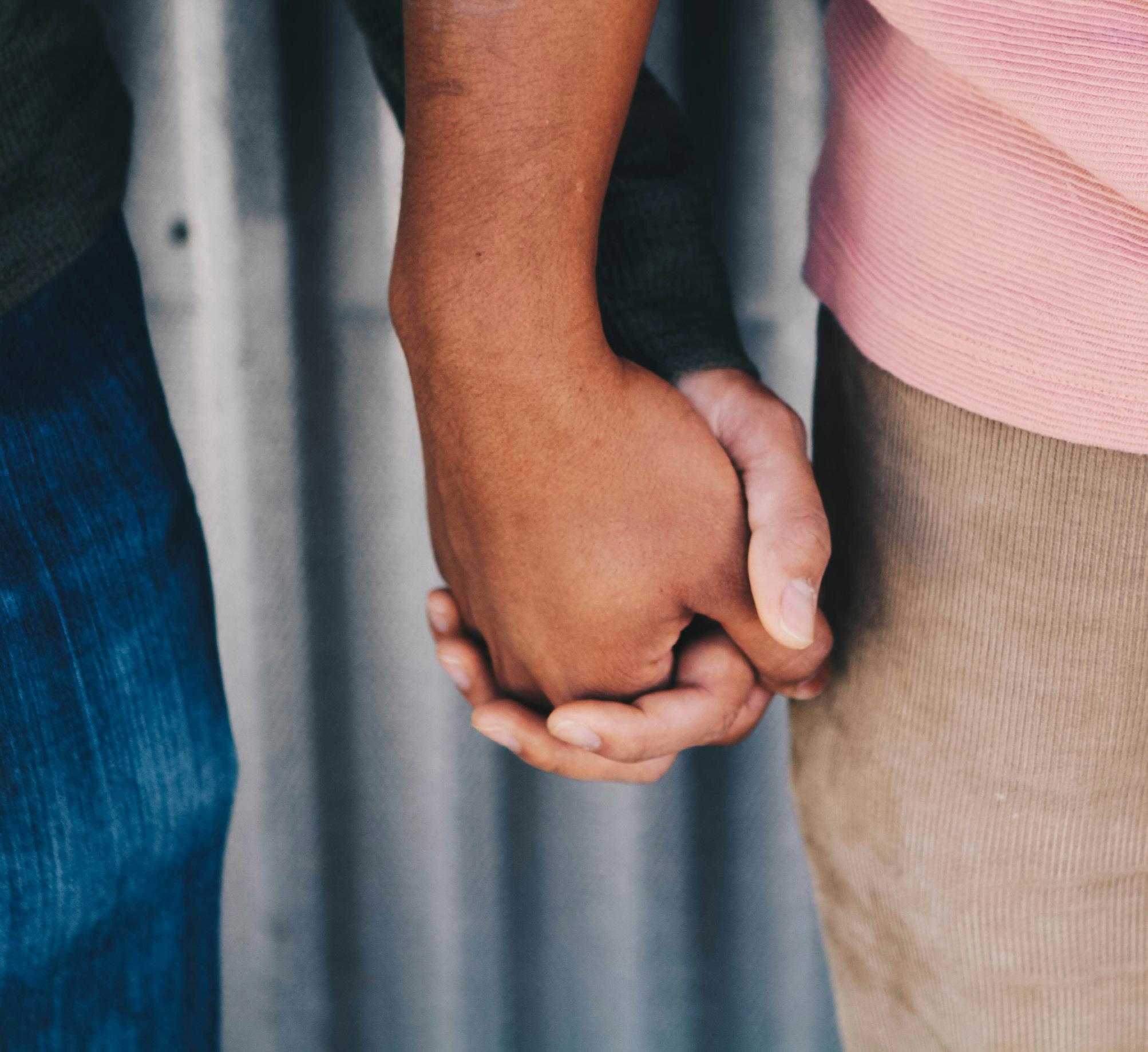
Sluttiness does not necessarily emerge through stages, as a couple craves novelty, but can be the spark that ignites and solidifies a relationship in the first place. Our era’s avalanche of pornography – remember that it was expensive and often hard to get until the late 1990s – gives gay men lots of ideas of what a great sex life looks like (hint: it involves lots of having sex in lots of positions with lots of different people).
Today’s way of doing things seems much more pragmatic and honest than earlier versions of open relationships. But even a couple that has a deeply shared sense of what a mutual recreational sex life looks like still has real emotions. And jealousy, envy, betrayal and frustration can haunt the most adventurous sexual athletes. There are so many ways to have an open relationship, so many details to negotiate. What works sexually may not work emotionally. A recent post on the Askgaybros subreddit is a perfect example: “We had threesomes and group sex together and I was okay with it and even found it quite hot to watch him with someone else,” writes
a 23-year-old. “After about six months together he told me he wanted to explore on his own…. Long story short, I hate it and I’m miserable. We don’t live together so I’m constantly monitoring him on Grindr and checking his Snapchat score. Every time I see him online and can kinda guess he’s had a hookup I feel my stomach sink and my face goes red and I’m miserable for the rest of the day.”
Even those of us who can easily detach emotions from our sex lives might find that our partner’s sexual behaviour, when it’s going in a different direction from our own, causes inconvenience and triggers insecurities. Done carelessly, it can raise larger questions about how much our partner respects us, desires us, understands us and wants to protect us. Sure, honesty and communication can go a long way in taking the edge off. But not always. While sometimes sex is just meaningless fun, other times it’s an expression of who we are, what we care about, what our values are. Sex can, without us realizing, reveal what we think of our partner, for the better and for the worse.

A yacht adventure through Spain’s celebrated archipelago brings natural diversions and cultural revelry
By Doug Wallace
Just a few more minutes, please. I’m on the long boardwalk of Las Canteras Beach in Las Palmas de Gran Canaria, and I don’t want to leave. There are simply too many men with no shirts on. But the cruise ship terminal calls. So, roller bag in tow, I head for the Windstar Star Pride, my home for a week of exploration of the Canary Islands off the eastern coast of Africa. I’m hitting four of the seven main islands, plus the Portuguese island of Madeira, each promising a cultural stew of Spanish and African heritages, volcanic oddities, cloud forests, renowned wineries and perfect beaches. I can check my first beach off the list.
The Star Pride hotel manager, Andreas Pitsch, greets me at the gangway, as he does the almost 300 other passengers, instantly becoming everybody’s best friend. The ship is one of three Windstar motor yachts recently released back to the ocean after a mechanical refurbishment that also increased guest capacity from 212 to 312. They actually cut the ship in half and inserted new suites in the middle, also adding new, more fuel-efficient engines and more eco-friendly tech. Though a bit longer, the ship is still able to tuck into tiny harbours that larger cruise ships can’t reach.
And we have a bonus VIP guest: the president of Windstar, Christopher Prelog, is actually on board this week, something he does each year to stay in touch with operations and crew. “I spent quite a few summer vacations in the Canaries – Tenerife, Lanzarote, Fuerteventura – but I had forgotten how beautiful it was,” says Prelog, who is originally from Austria. “Coming here has reminded me of my childhood. There’s so much central European influence in these islands, which creates this unique atmosphere. Every island has its own identity. Travel is such a big educator.”
A lesson in lava punctuates the first stop, on the island of Lanzarote, which still bears the marks of eruptions of the Timanfaya volcano in the 1730s. We hike the lava fields of Los Volcanos Natural Park, hearing about how all the different-looking rocks and lava came to be, shoved along with the flow or spat out or wrinkled into terraces. The geology is so interesting, the three hours fly by, thanks to our astute guide, who is, unsurprisingly, a surfer. Lanzarote’s beaches are top surfing attractions and Olympic-qualifying windsurfing hotspots. And despite having a

dry desert climate – rainfall here is a rare event – the island is famous for its wine, notably mineral-forward whites from the Malvasia grape. Vines grow out of little holes dug into the volcanic soil, ringed with stone supports to protect them from the wind.
More rock formations await on the island of La Gomera, also volcanic, yet much more verdant, the upper reaches of the island’s mountains covered with dense forests of laurel, beech and fir trees. A winding cliffside highway bus ride into Garajonay National Park shocks us all into silence, and it is hard to look down, but I do. Frequent pit stops at mind-blowing viewpoints overlooking the deep, lush canyons help to quell the queasiness, and my pictures all look like I’ve been on a Game of Thrones cinematic tour.
Back on the Star Pride, we compare notes on the past couple of days, with some braving camel rides or touring through volcanic tunnels, and others wine-tasting or whale-watching. Everybody seems to have found an excursion that plays to their passions. People get to know each other quickly – this is a casual bunch. Various cocktail parties and flag-hoisting sailouts bring everyone together, as does a big barbecue one evening on the pool decks, complete with a whole barbecued pig. The entire crew surprises us with a fully choreographed line dance.
I see Prelog each evening chatting with the guests, he and his gregarious wife both quite stylish and quick with a laugh. He actually started out as a white-gloved waiter with Seabourn Cruise Line, eventually becoming a vice president there, before joining Windstar in 2016. “Windstar is different in terms of its personality and how it interacts with the guests,” he says. “Some cruises are very formal, regimented – we are none of that. And you get a personal experience with the crew because of our size. There are all these elements of connection – like the line dancing. It’s a highly social environment.”
Ports of call offer plenty of cultural engagement
Santa Cruz de Tenerife is the biggest city on the biggest Canary island, and one of the capitals, along with Las Palmas. Once we dock, passengers exit and scatter. Some I don’t see for a couple of days, as we are overnighting here, so there’s no rush to be back on the ship at


a certain time. Some tour the city or add in a tour of the region, while the adventurers go directly to Mount Teide, Spain’s highest peak, and float up the cable car to the top, hitting almost 12,000 feet – dizzying by all accounts. Dinner and stargazing on the mountain is also an option, with fingers crossed that the weather co-operates.
I spend a morning at fifth-generation family winery Bodegas Monje outside Santa Cruz, where I enjoy a lunch of wrinkled potatoes with mojo sauce, which doesn’t sound very exciting, but it is. Swirling some of the estate’s crisp white wine, we watch the chef create two herb- and pepper-based sauces and then reproduce them ourselves
over more wine. Lunch is always more fun when you’re charged with helping to make it yourself. We are also treated to the winery’s newest star, a red wine that is aged under the sea for five months. The ocean’s cool environment apparently makes for an ideal cellar, the increased pressure speeding up the chemical reactions of the maturing process.
Five hundred kilometres later (I discover that I am bad with nautical miles), we make shore at Funchal, the chic capital of Madeira, our final stop before Portugal. The island looks and feels very much like they took the best neighbourhoods of Lisbon and transplanted them here, within all the palm trees and a ton of rock. We wander the limestone-


and basalt-tiled streets, popping into 15th-century landmarks and buying trinkets in the boutiques. I manage to experience the grilled limpets, honey cakes and passion fruit pudding, culinary specialties all.
I
to

Soldier Barry Winchell Dies After Anti-Gay Hate Crime
(July 6, 1999)

Pfc. (Private First Class) Barry Winchell of the 101st Airborne Infantry was one of the earliest martyrs of Don’t Ask, Don’t Tell (DADT), the official United States policy on military service for non-heterosexual people that was in effect from Feb. 28, 1994, until Sept. 20, 2011. Winchell was murdered in his barracks at Fort Campbell, Kentucky, one of the nation’s largest army bases, in the pre-dawn hours of July 5, 1999, while he lay sleeping on his cot. He was 22 years old.
At around 2 am on July 5, 1999, Winchell was brutally beaten with a Louisville Slugger baseball bat by Private Calvin N. Glover of Sulphur, Oklahoma, while Winchell’s roommate Specialist Justin R. Fisher of Lincoln, Nebraska, encouraged the attack. Both had been drinking beer throughout the day.
Winchell never regained consciousness after the attack. The next day, on July 6, 1999, Winchell, his face swollen beyond recognition, died of massive head injuries at the Vanderbilt University Medical Center in Nashville, Tennessee.
Rumours had circulated on the post beforehand that Winchell, from Kansas City, Mo., was gay, and it was later revealed that he had been dating a transgender performer named
Calpernia Adams, whom he had met on a trip to a Nashville transgender club.
Glover and Fisher’s trial, which came just a month after the conviction of two Wyoming men for the murder of a gay student, Matthew Shepard, received nationwide publicity and led the army to carry out a detailed investigation into the military’s treatment of gay service personnel. An investigation by the advocacy group Servicemembers Legal Defense Network found that Winchell had been the target of constant anti-gay harassment in the months leading up to his murder.
Glover was convicted of premeditated murder and sentenced to life in prison, while Fisher was sentenced to 12 ½ years in prison (however, he only served seven).
Winchell’s mother, Patricia Kutteles, and her husband, Wally, went to the press following the trial calling for a re-examination of the military’s “Don’t Ask, Don’t Tell” policy. The Winchell case galvanized a national review and reappraisal of the controversial military policy, and several legal challenges to DADT were filed in the early 2000s, but the repeal of the discriminatory law didn’t happen until September 20, 2011.
IN Magazine is grateful to our corporate and community partners who together, through their generous financial and in-kind support, contribute to our mission of celebrating and elevating Canada’s 2SLGBTQI+ communities 365 days a year.

















